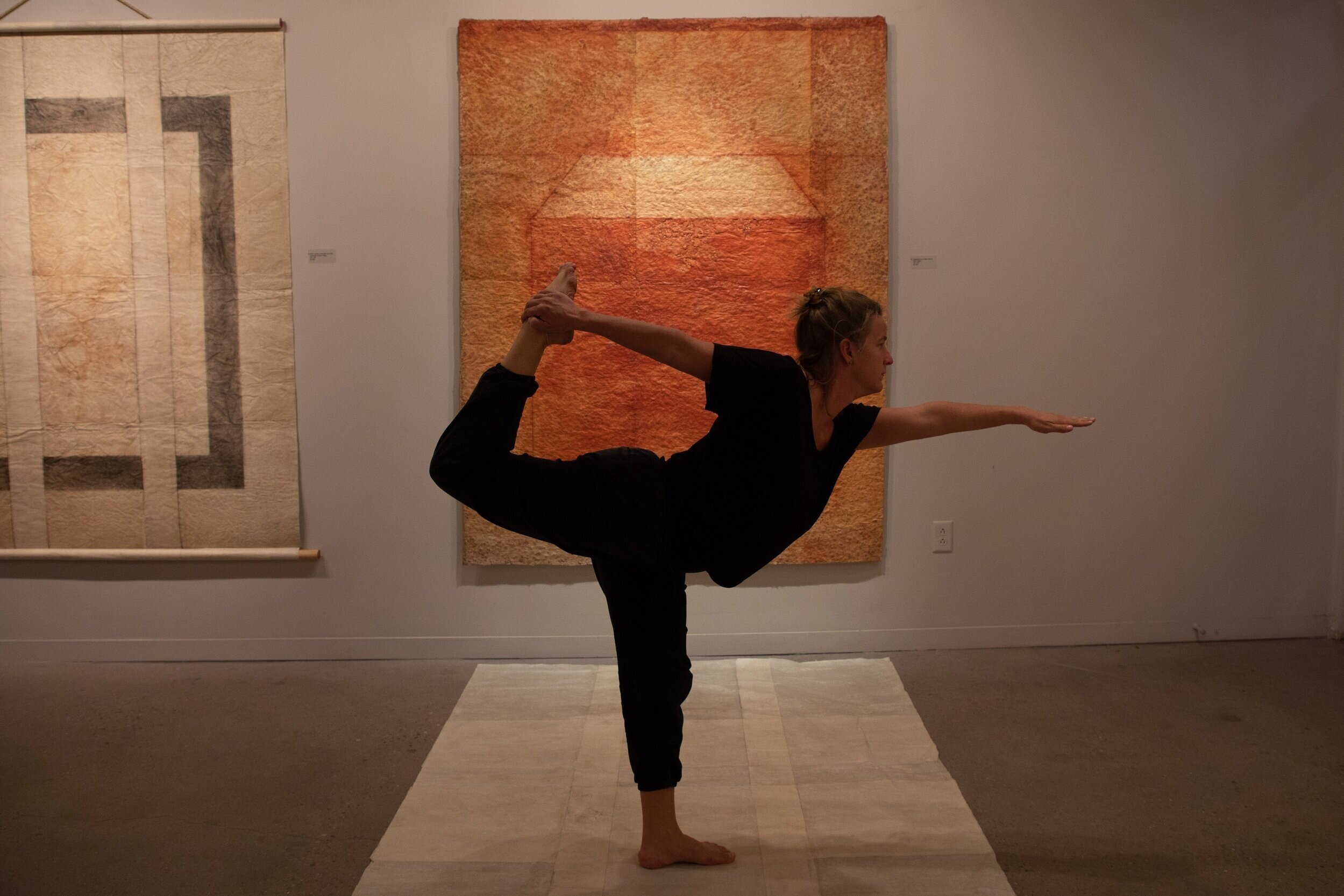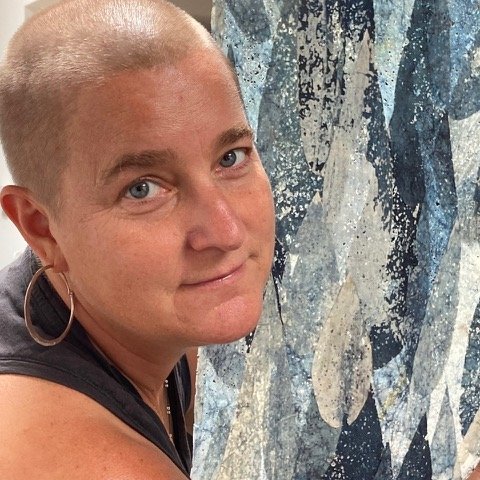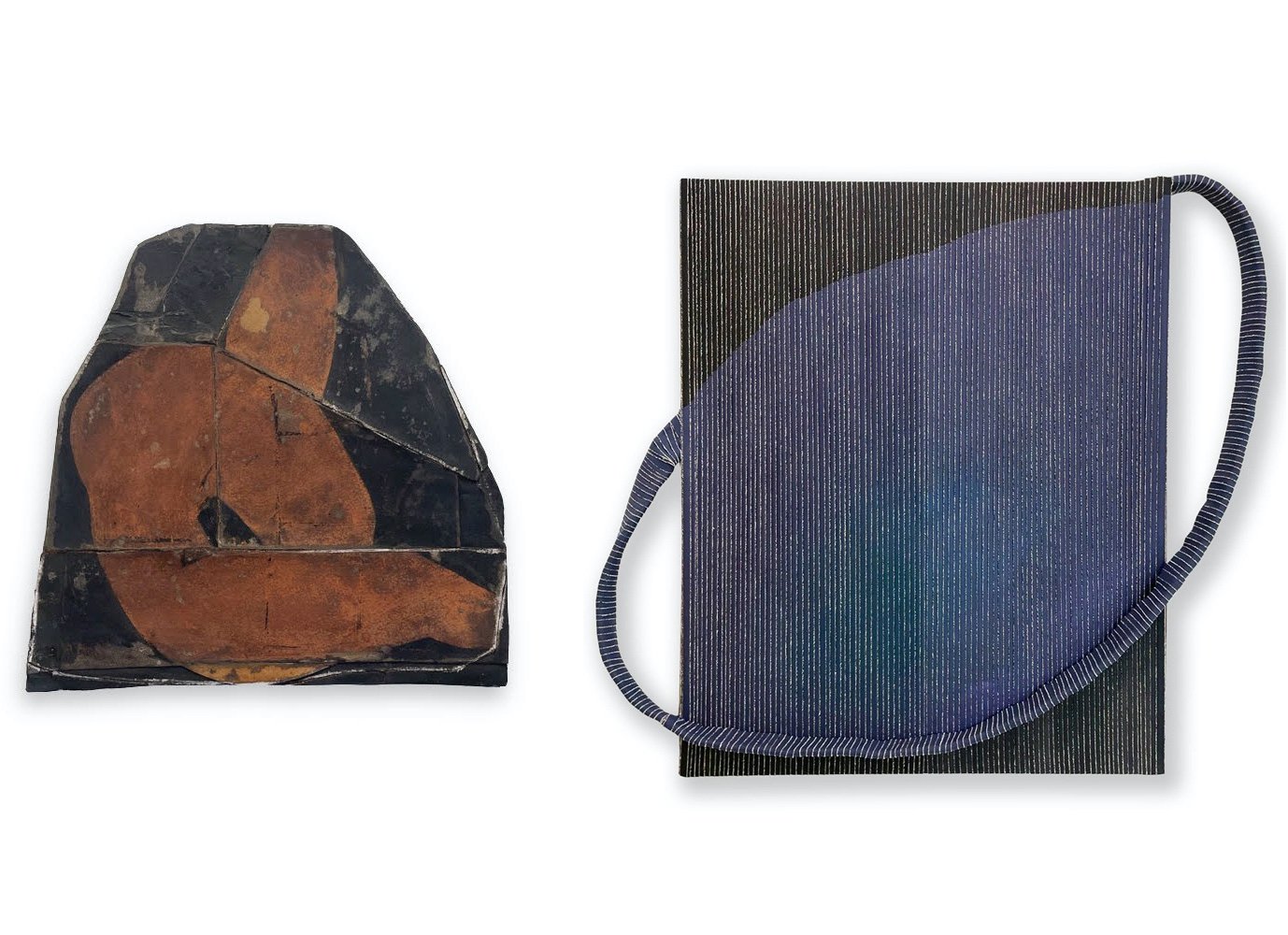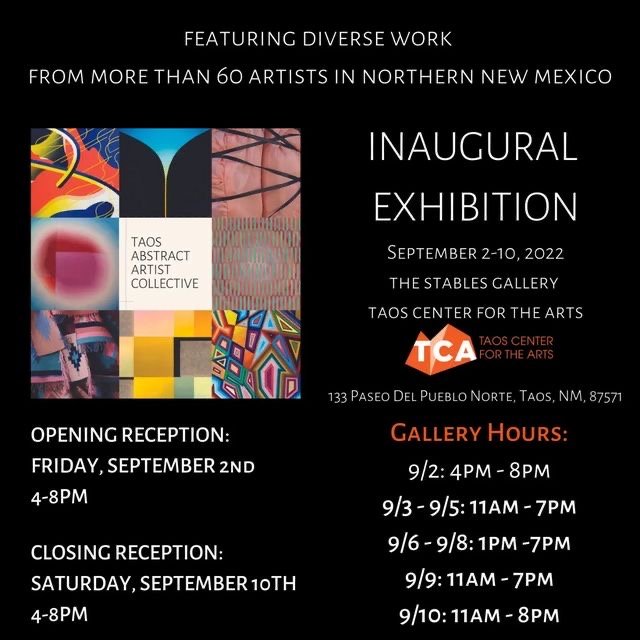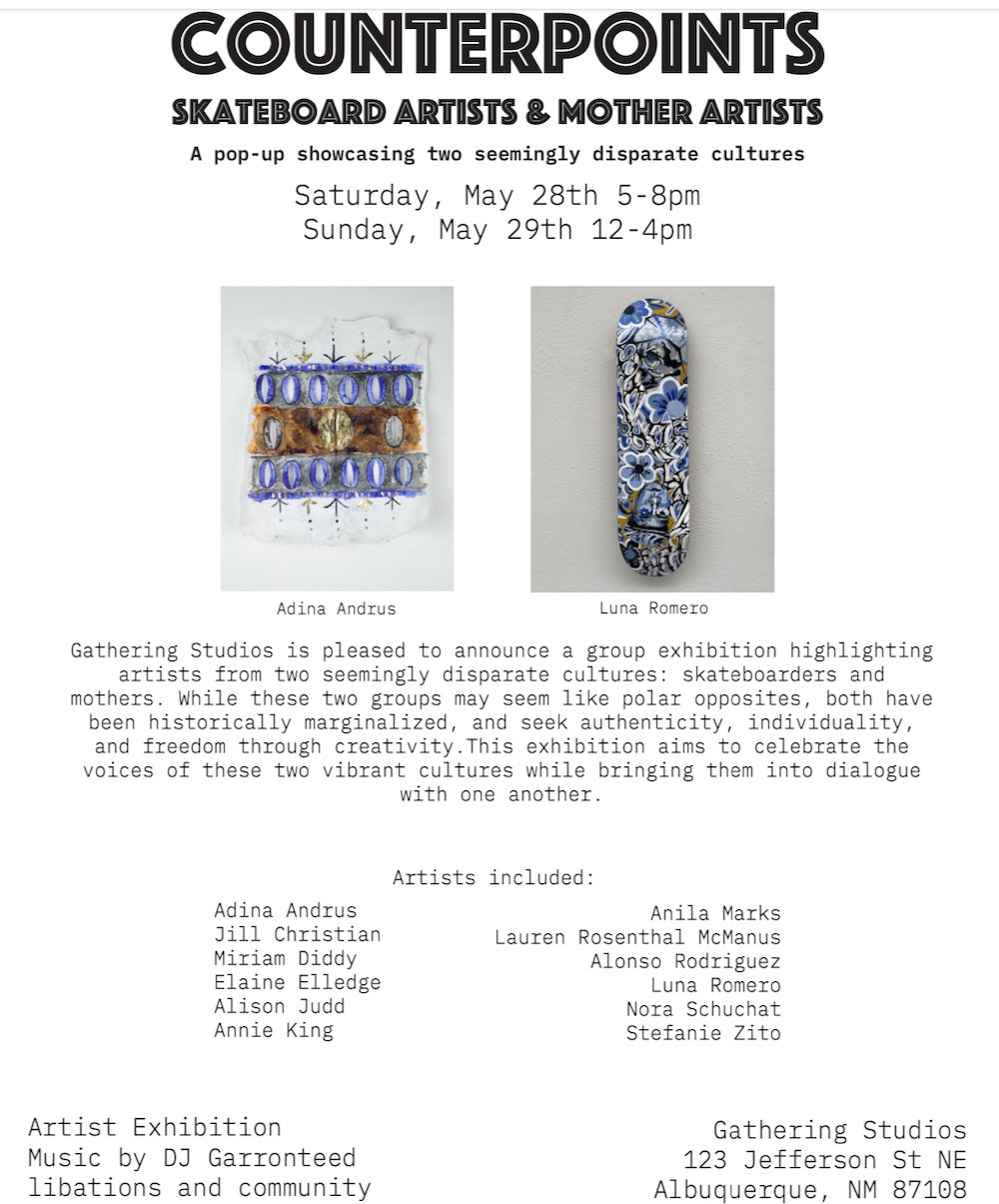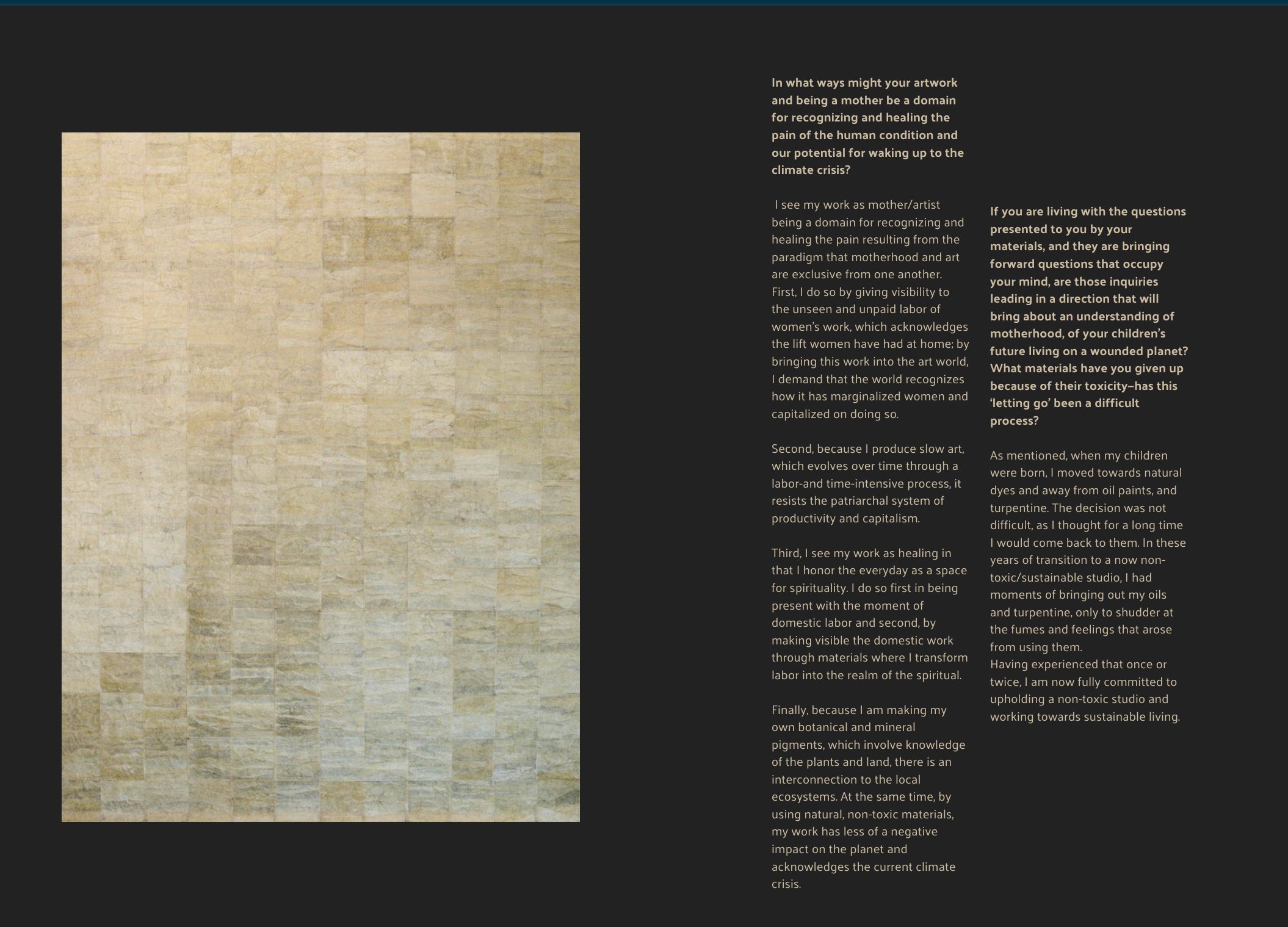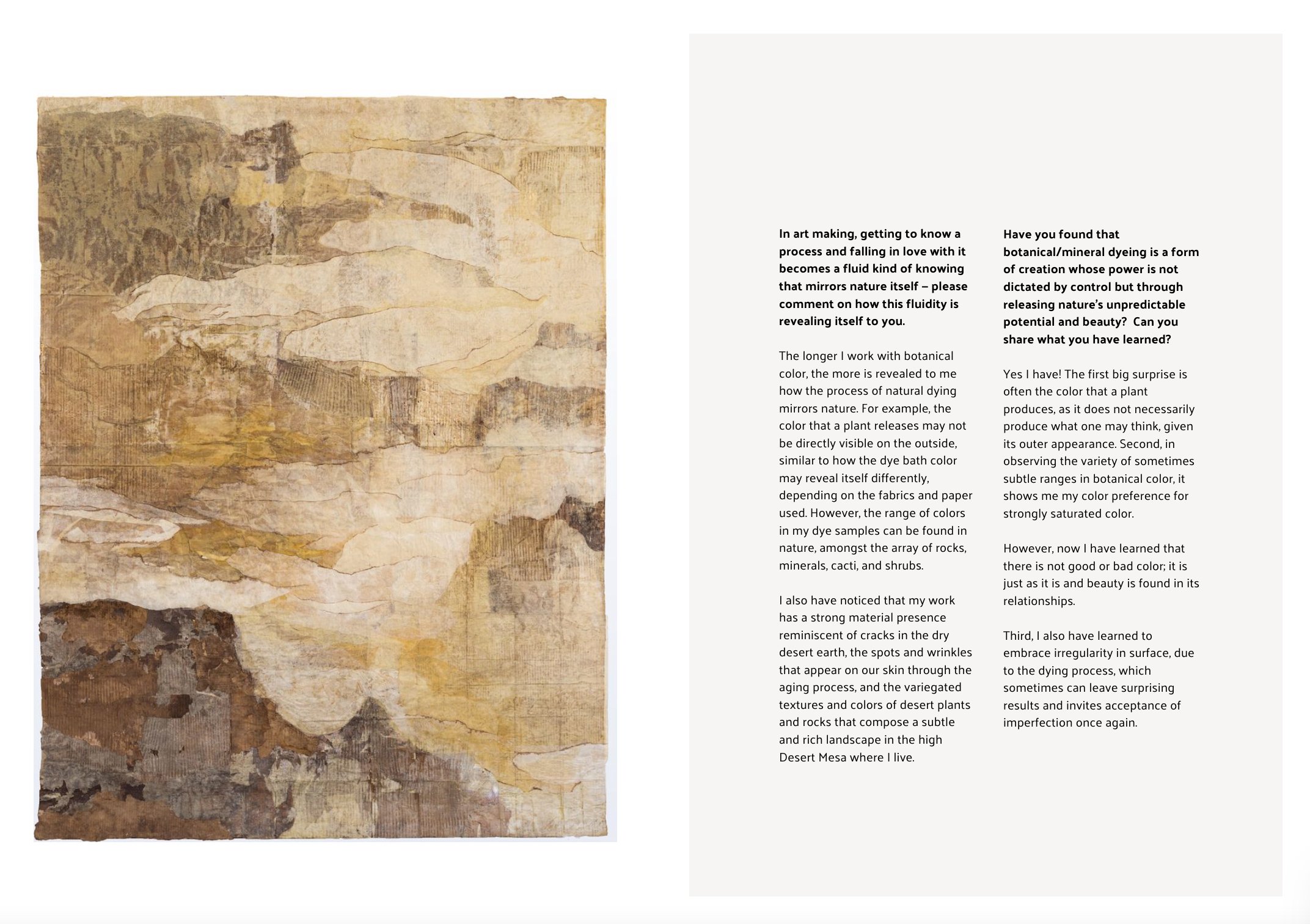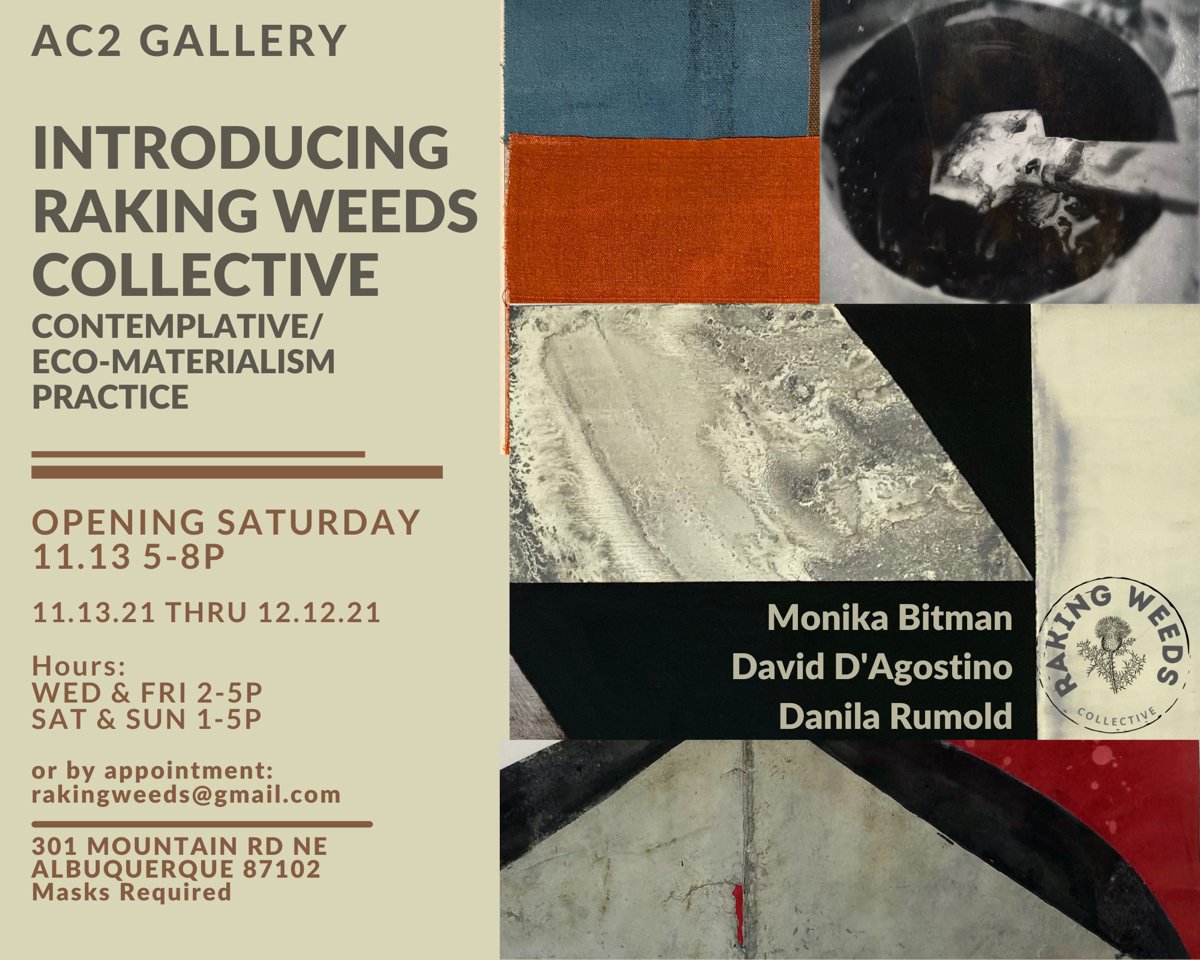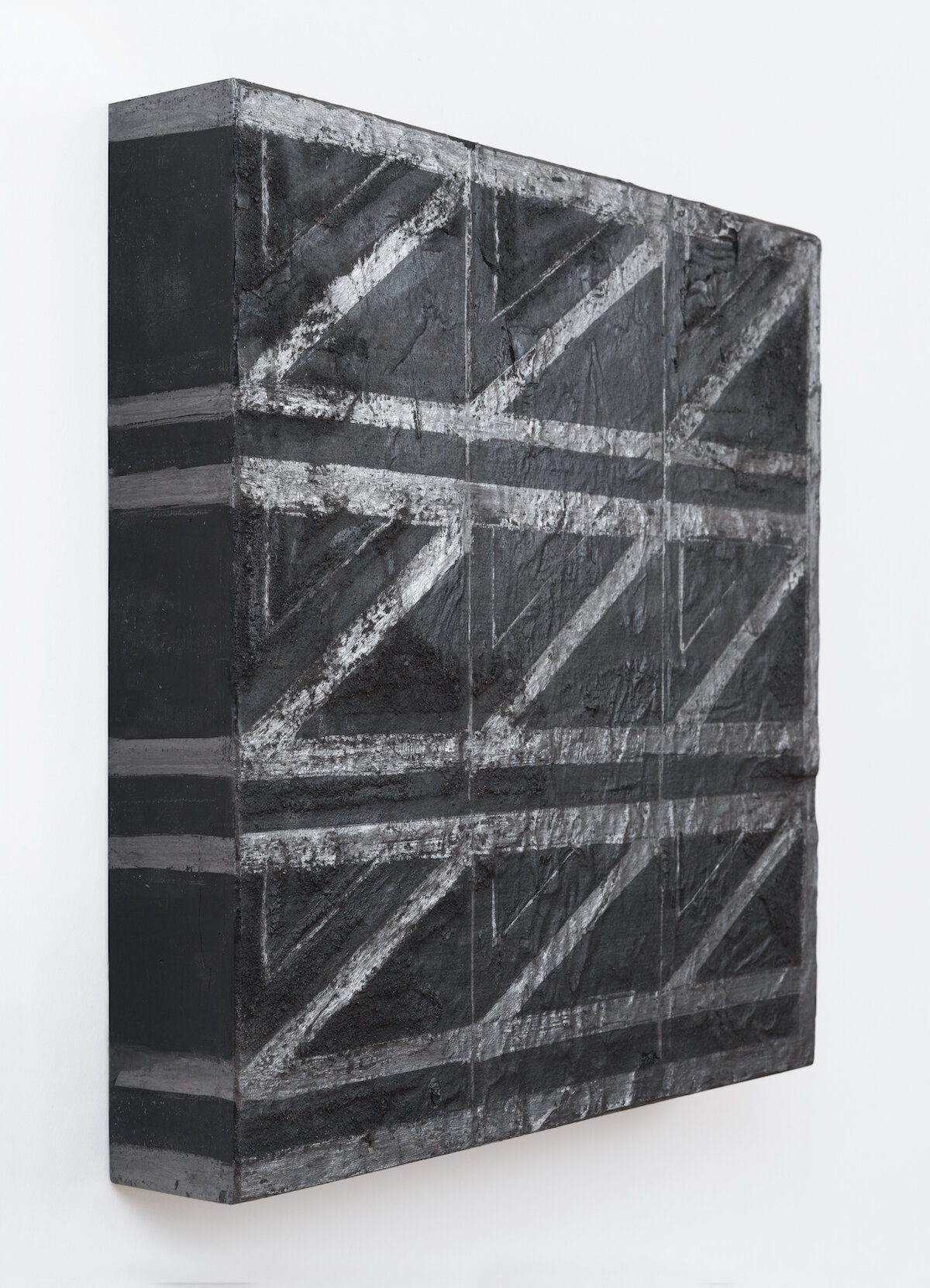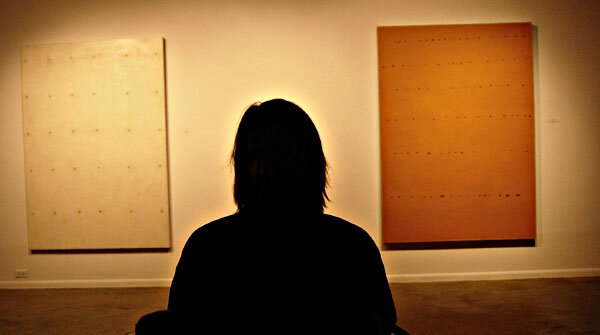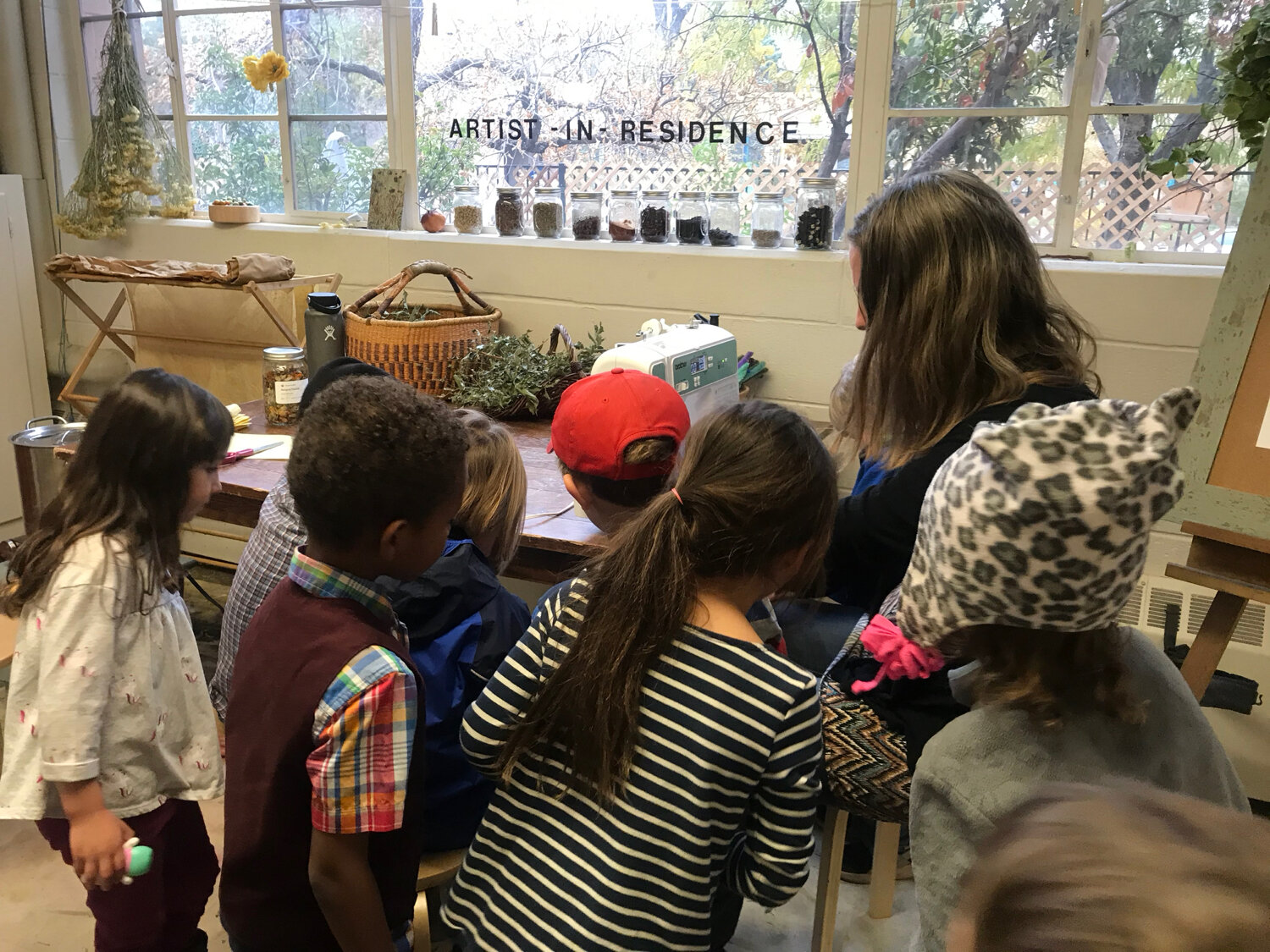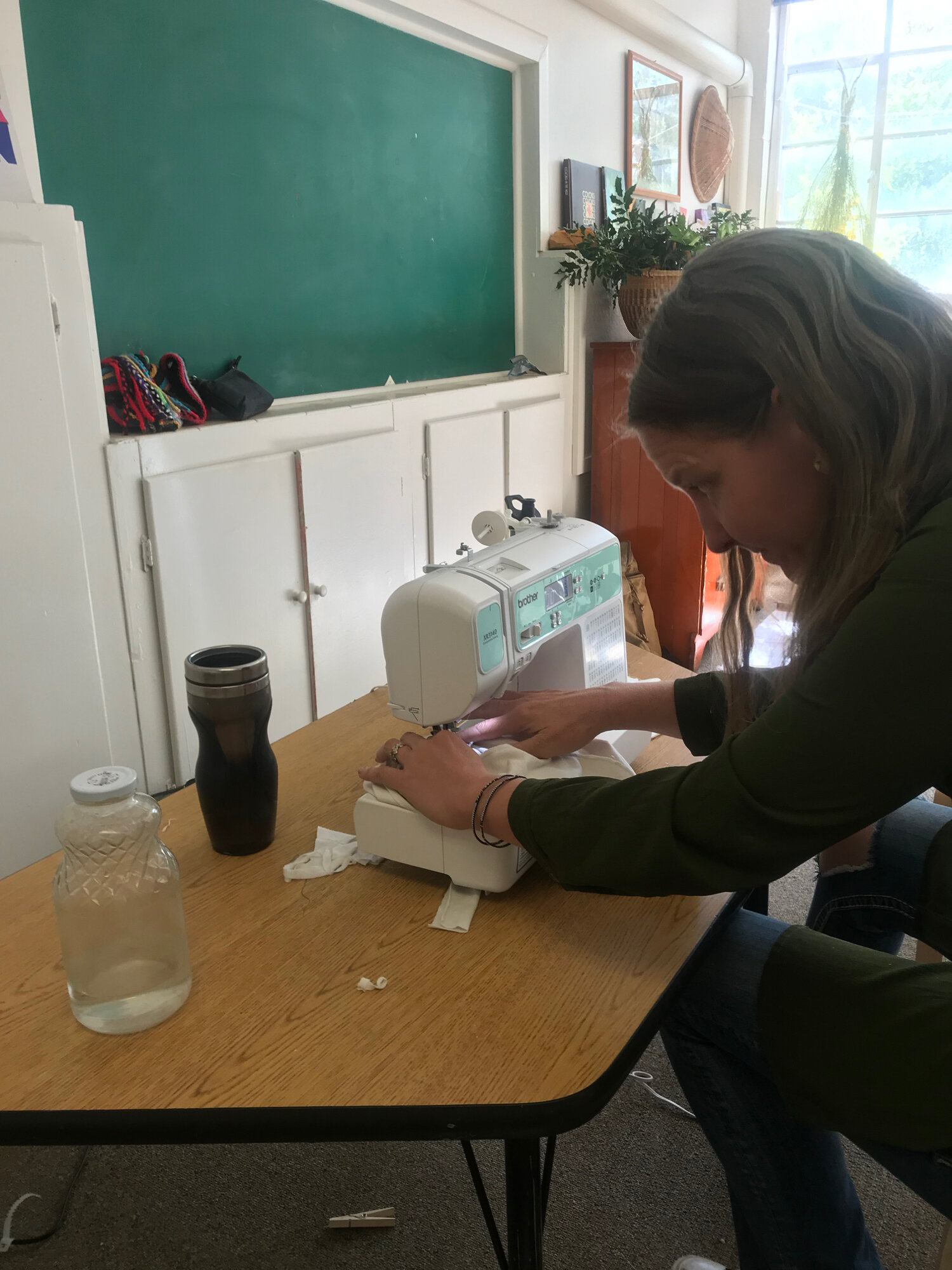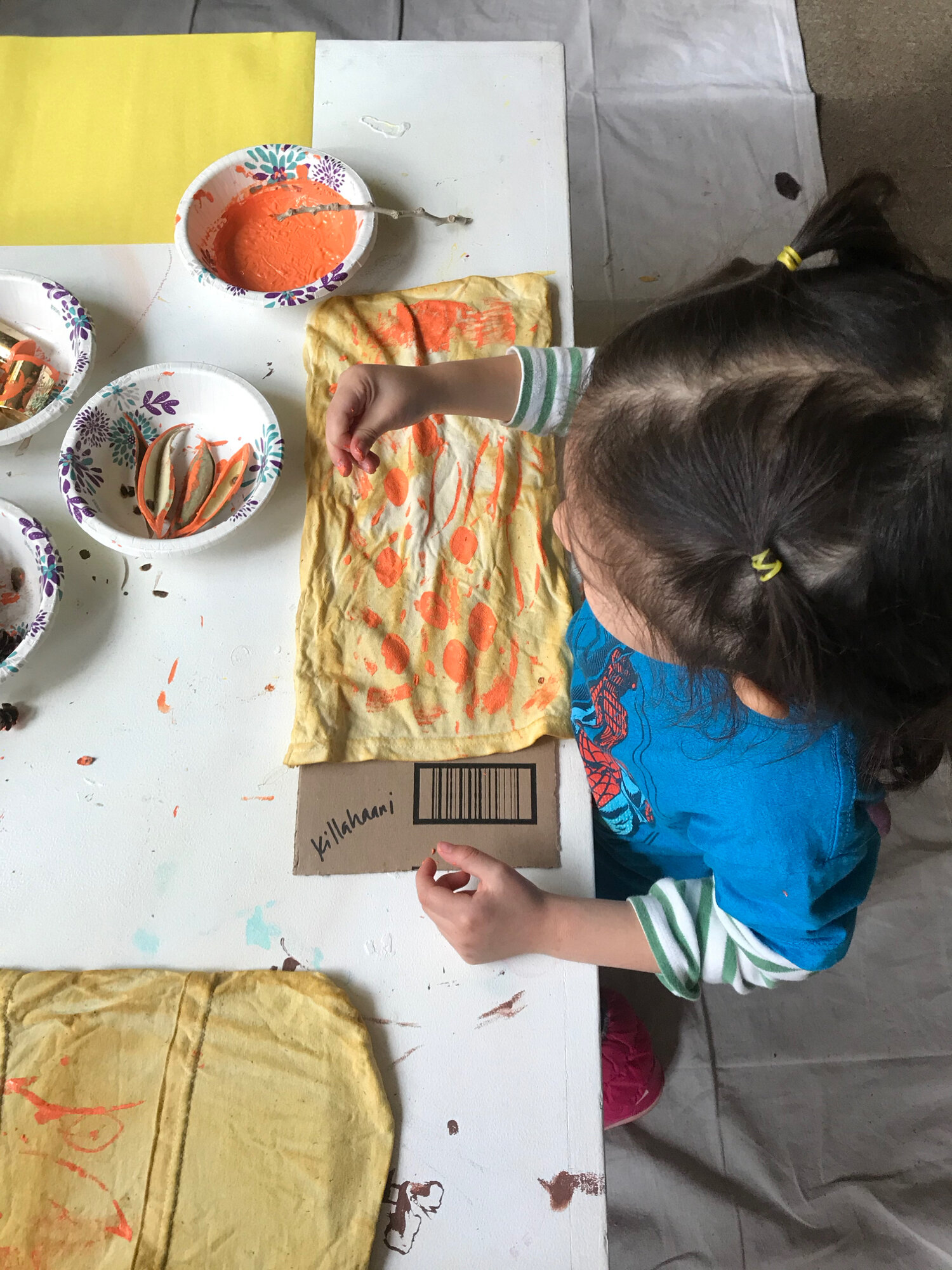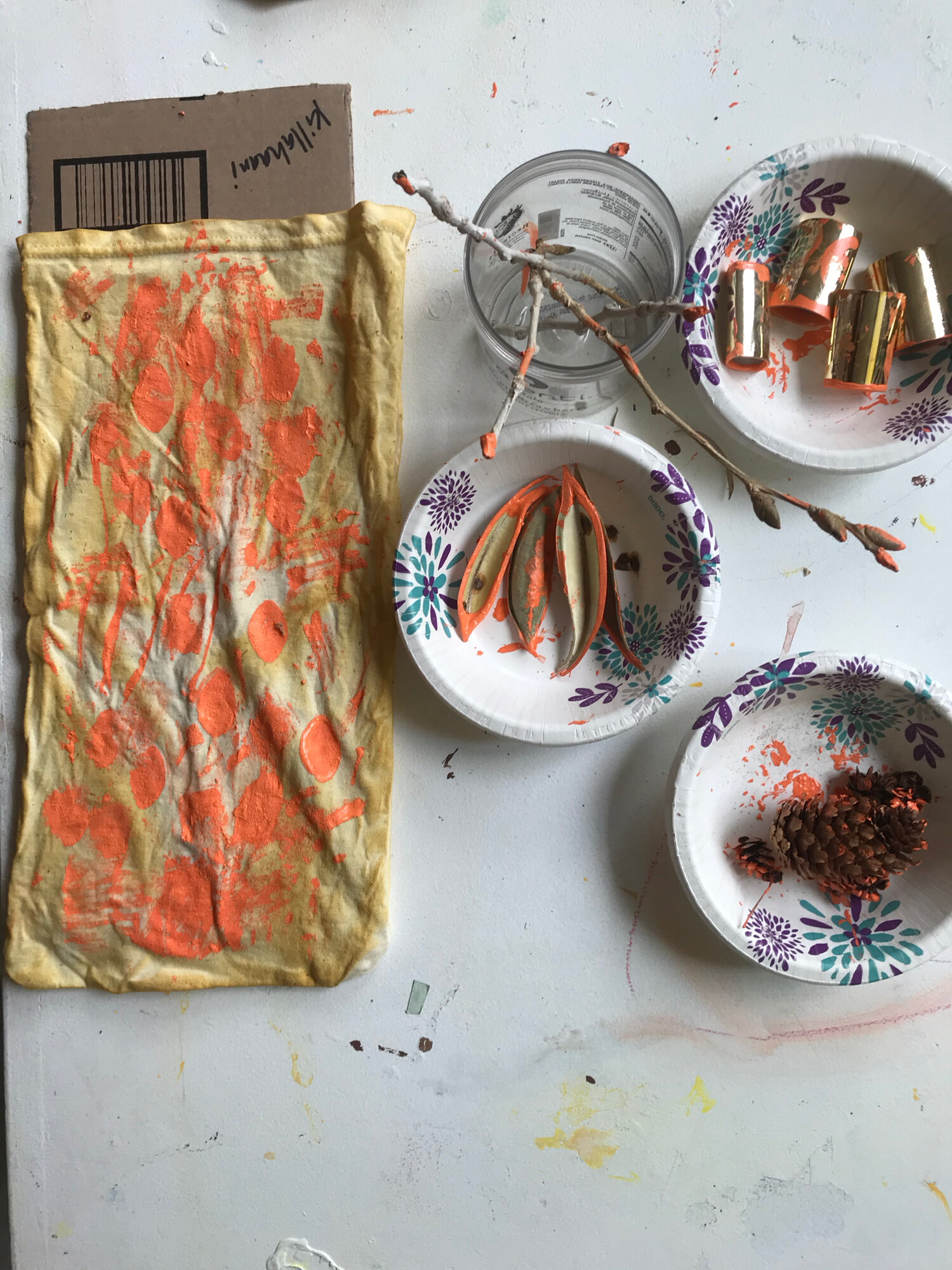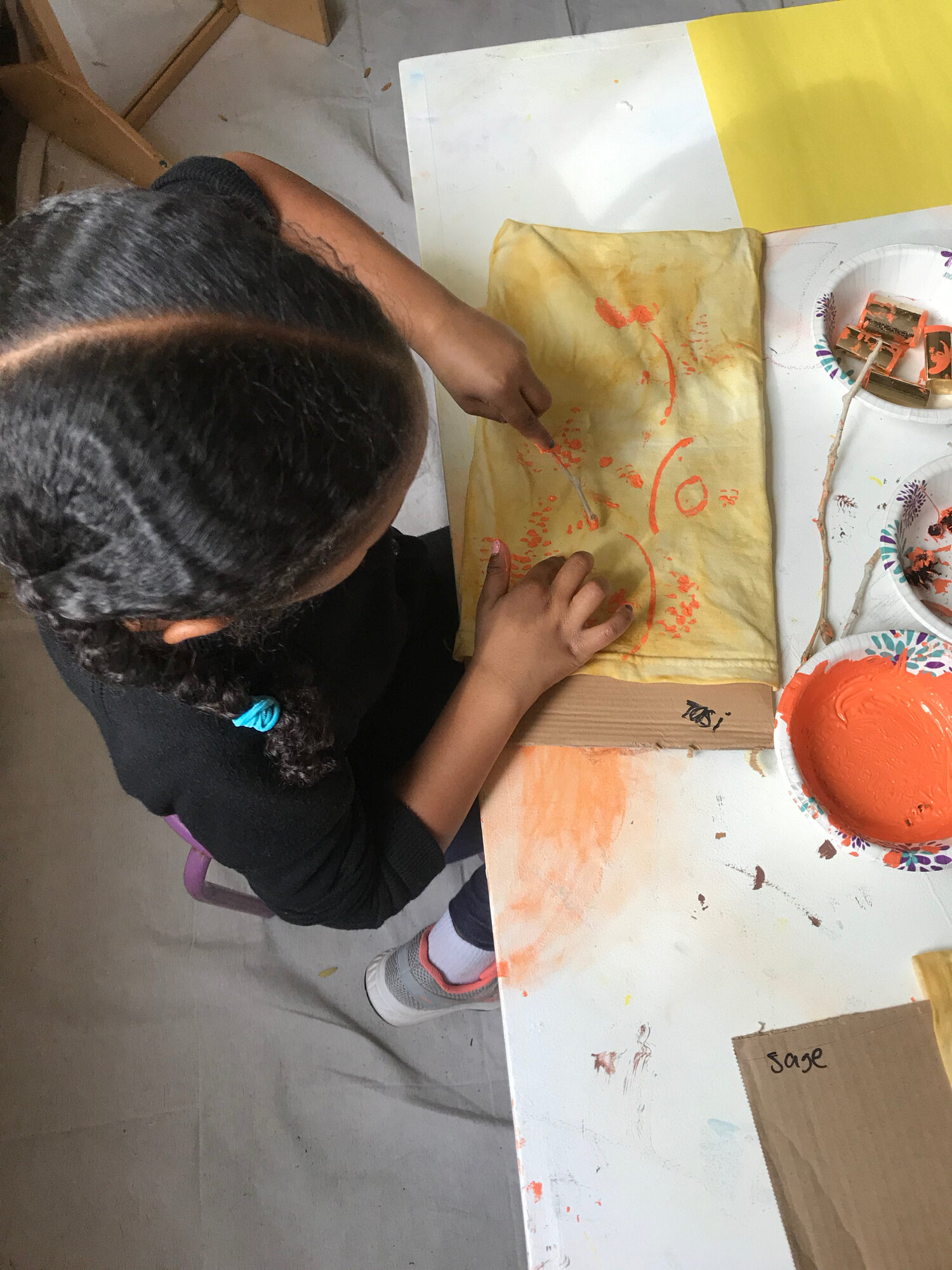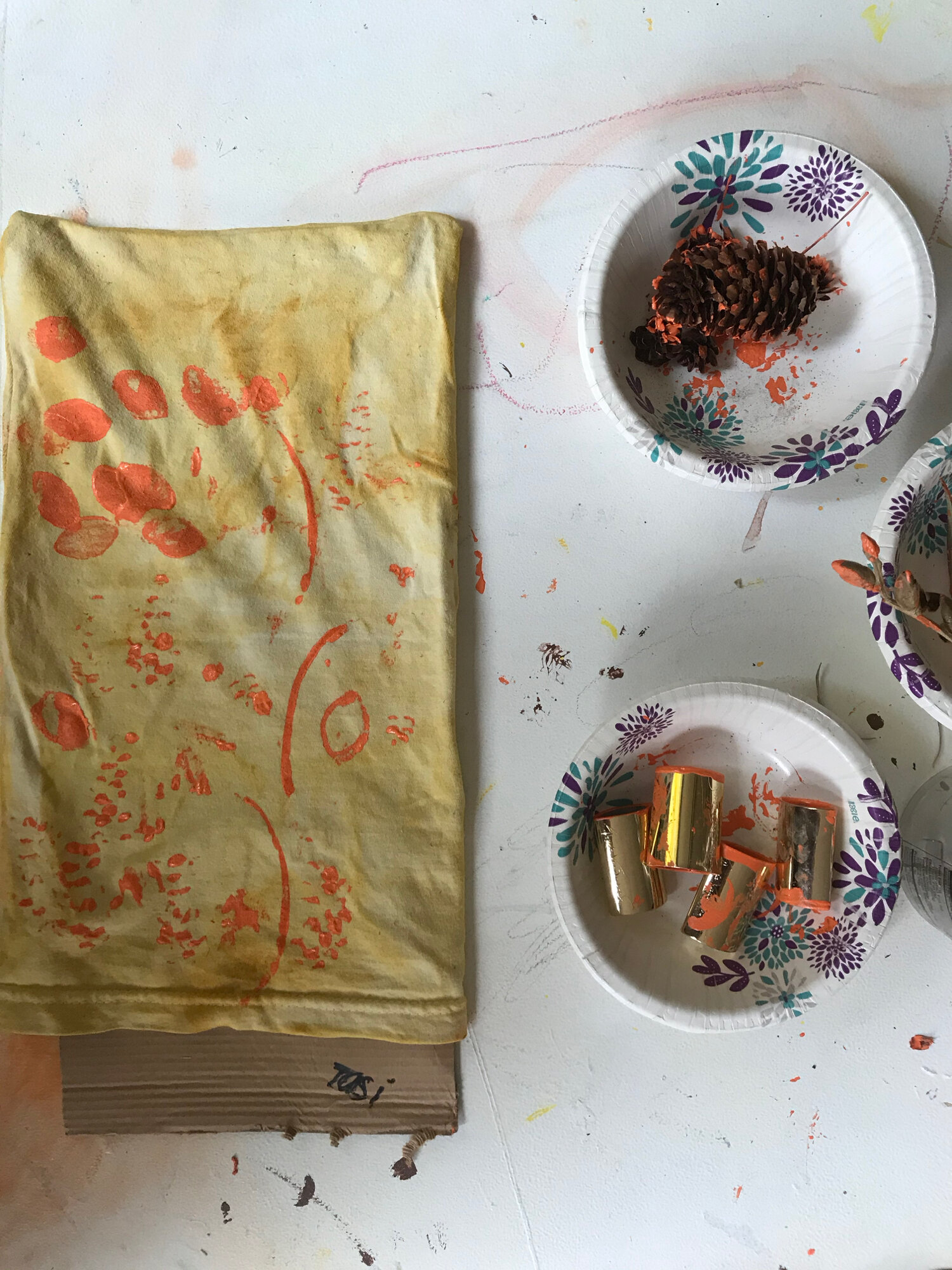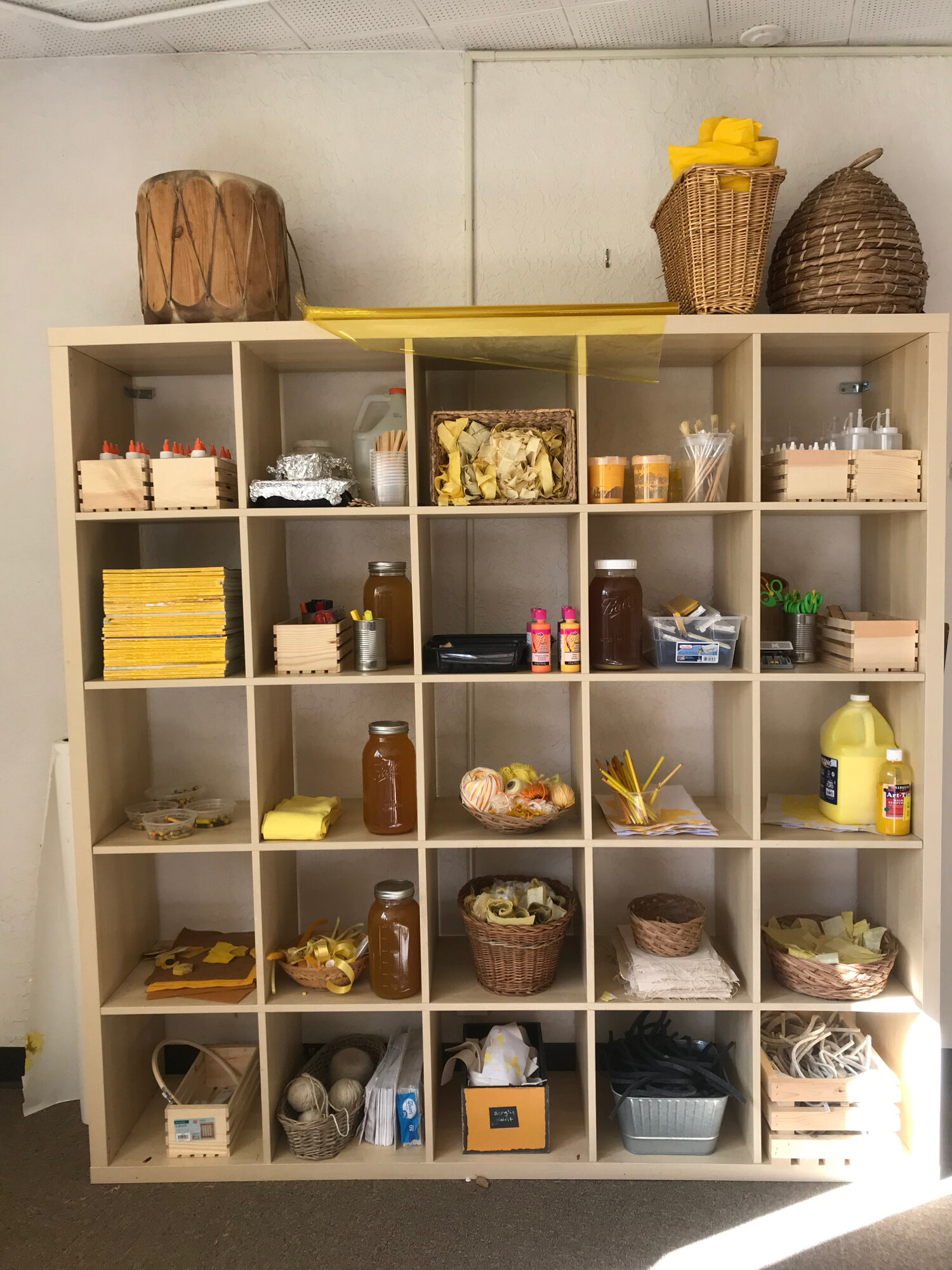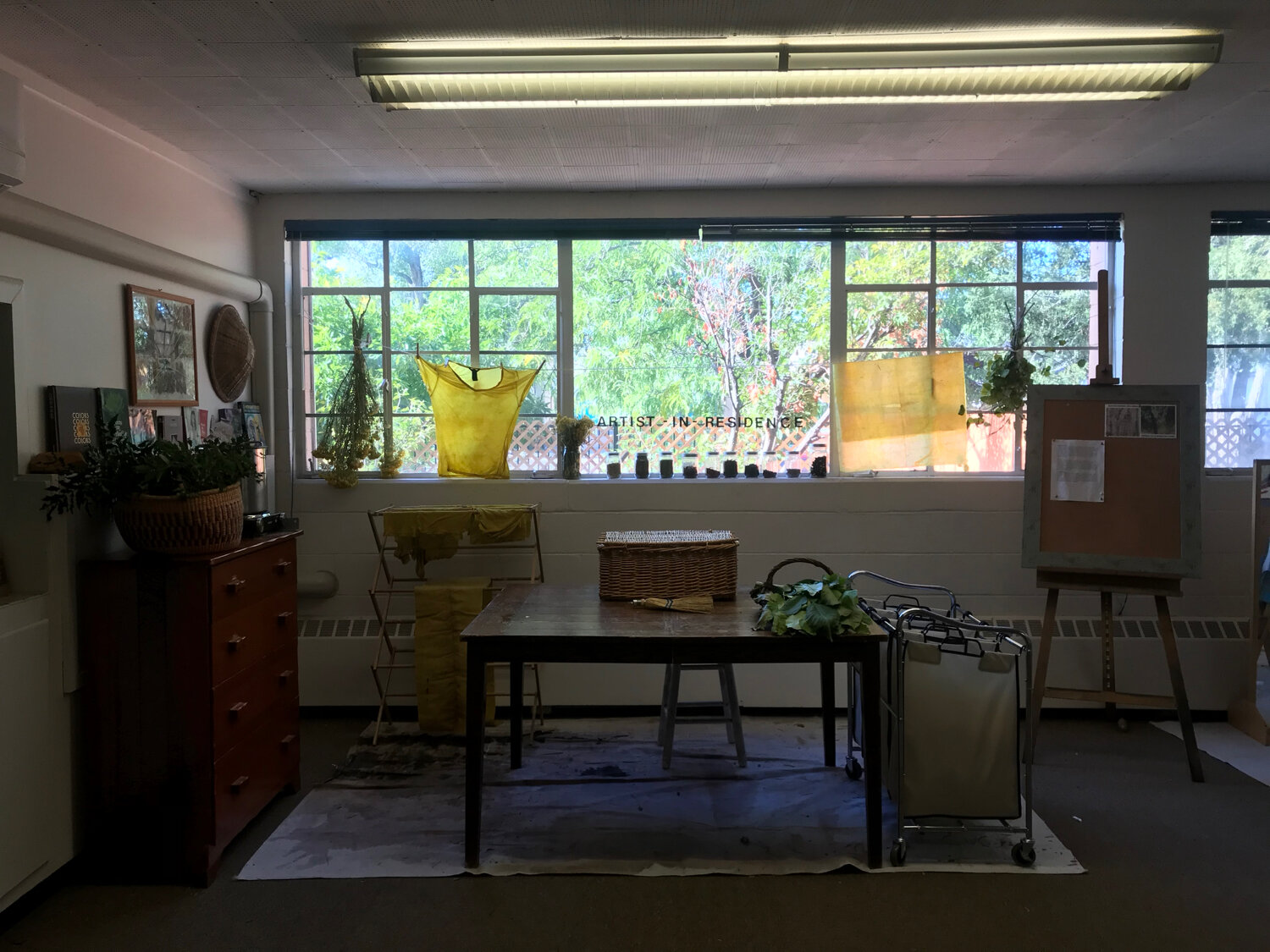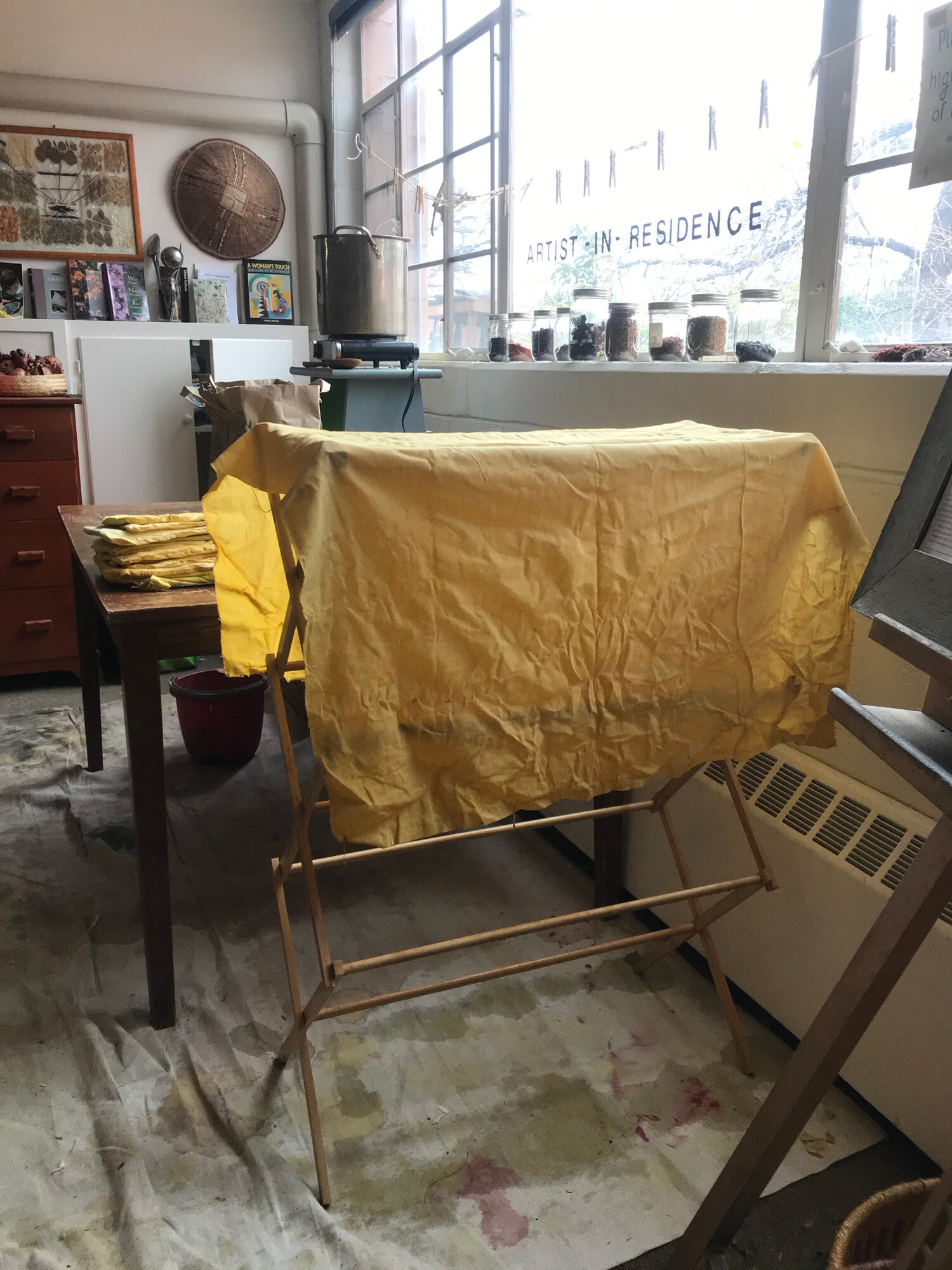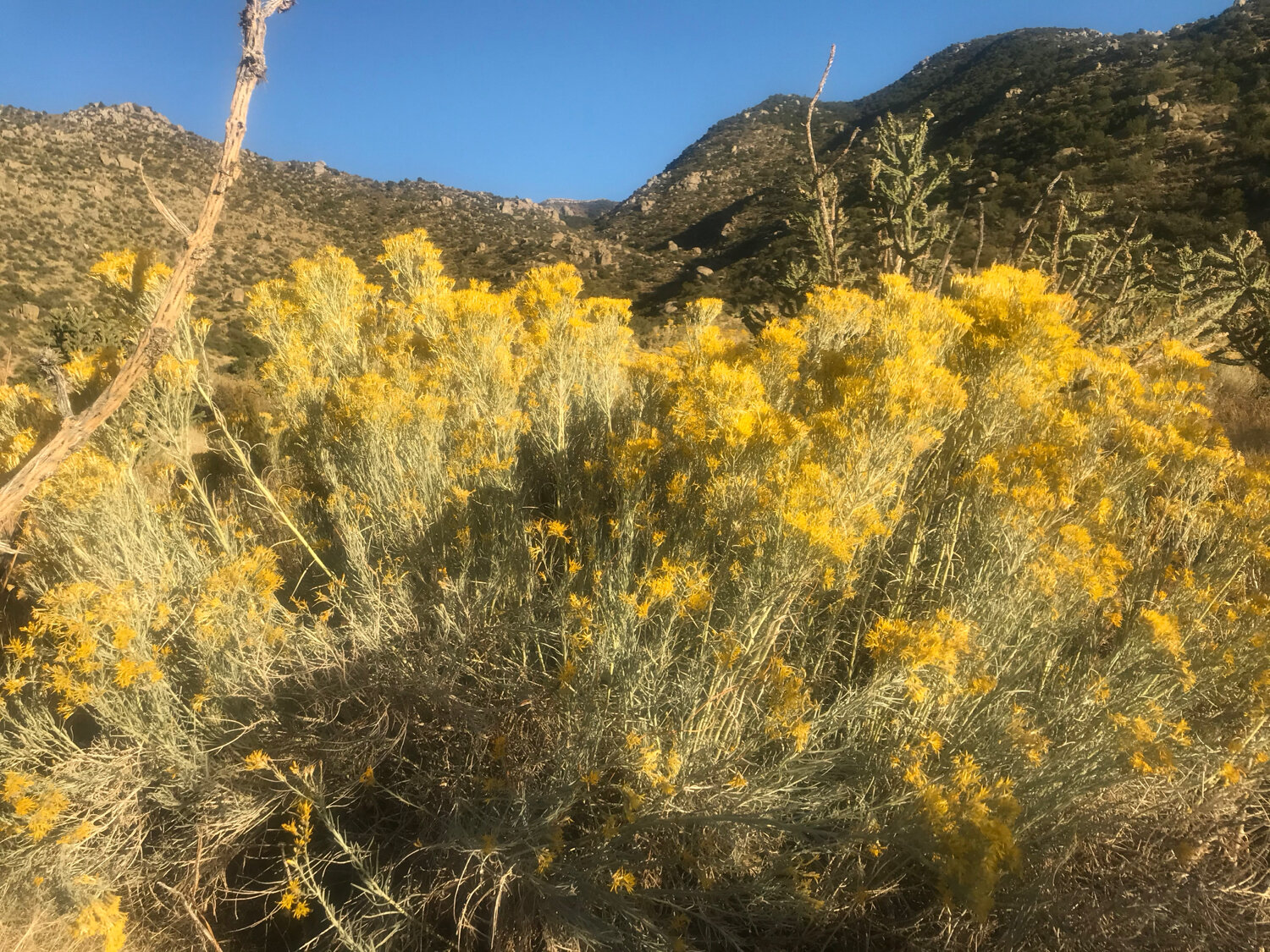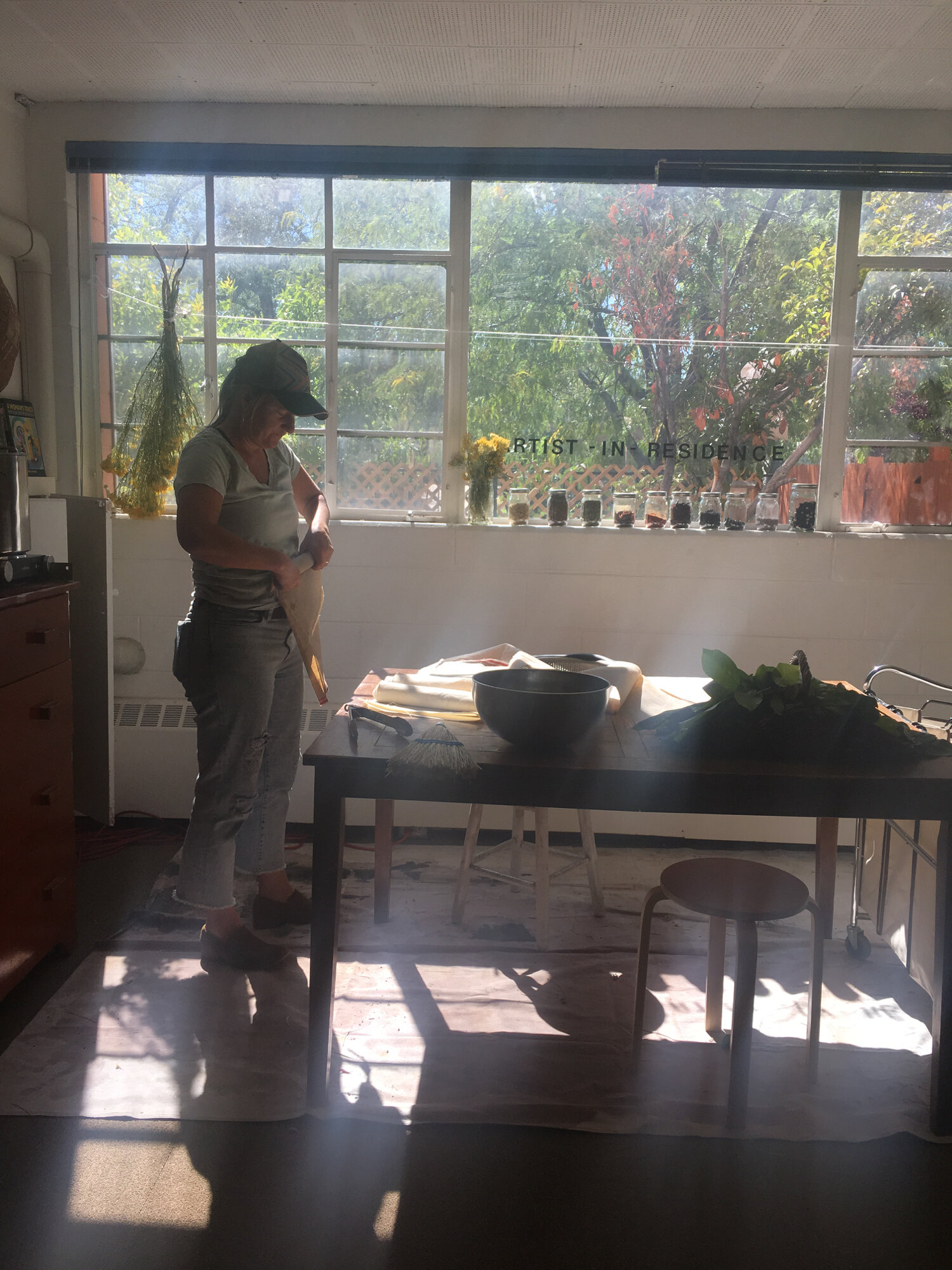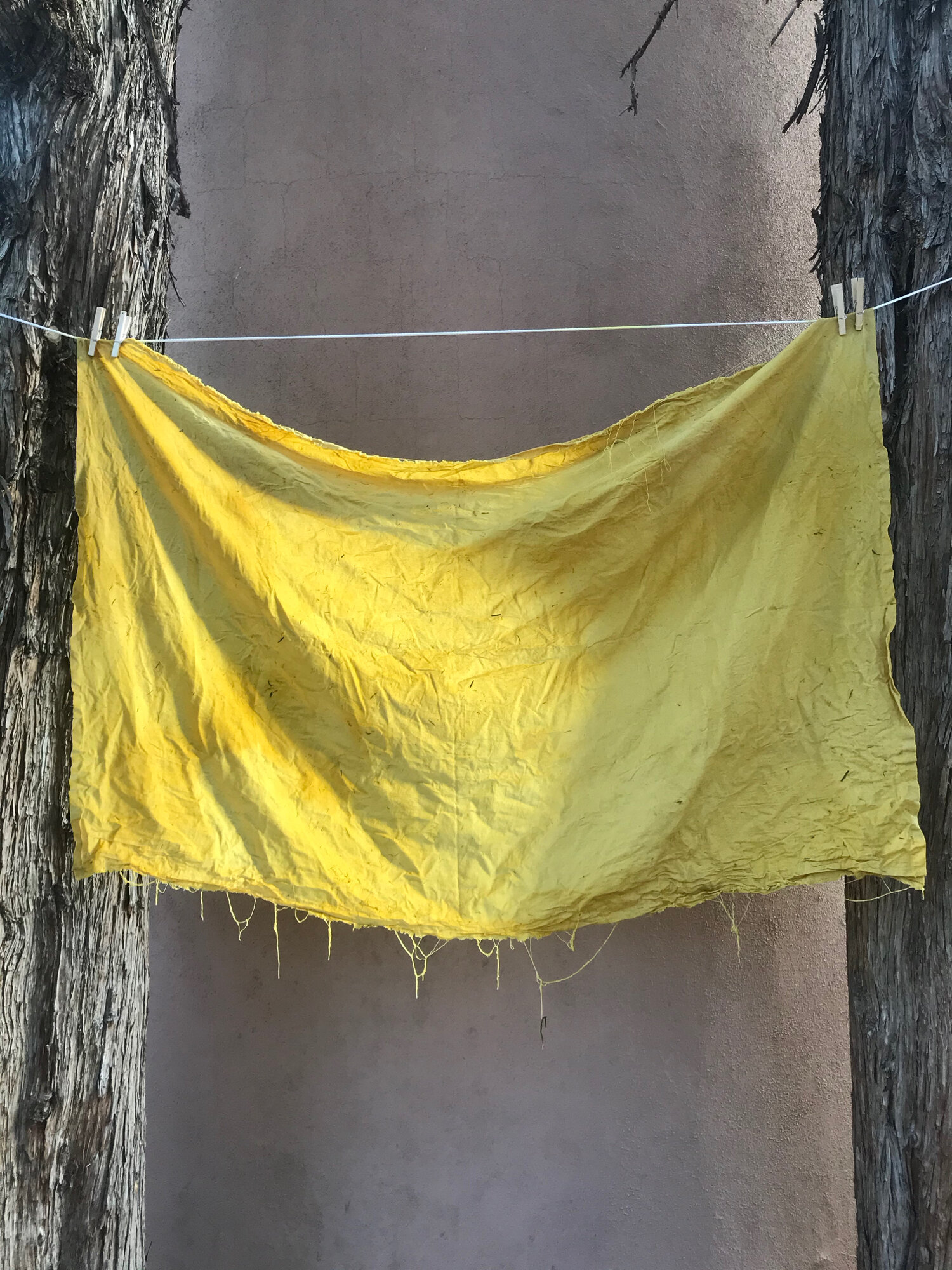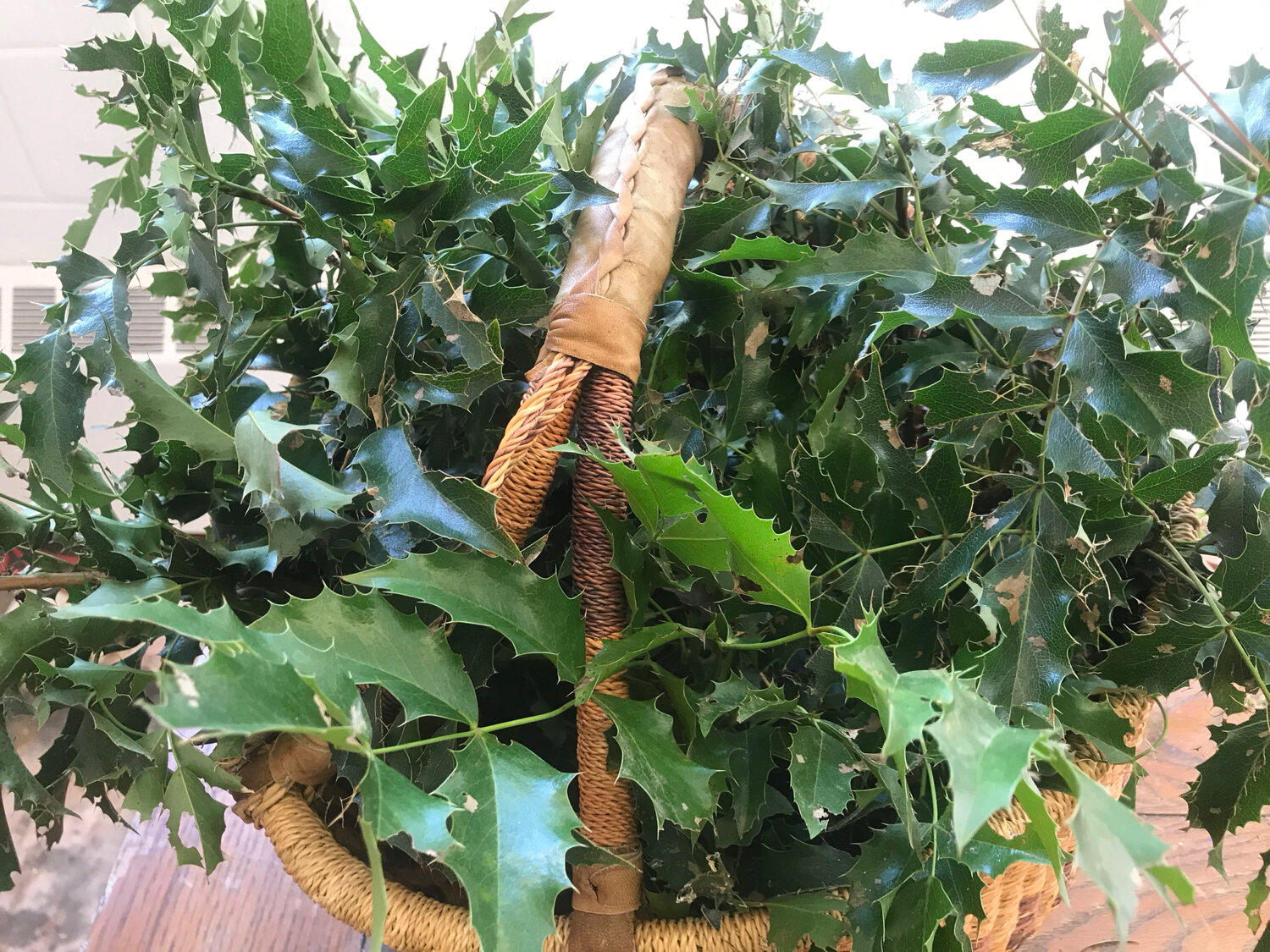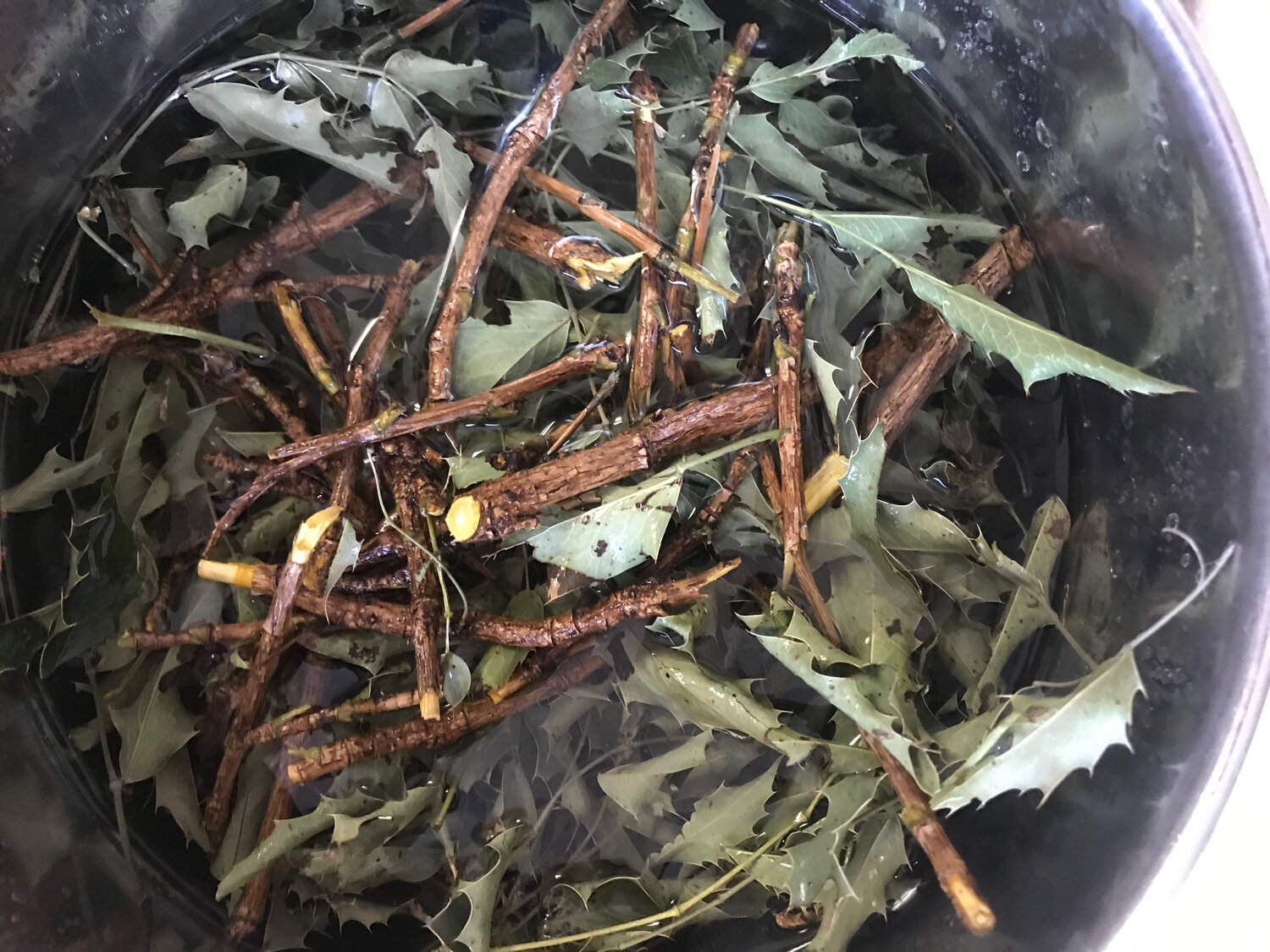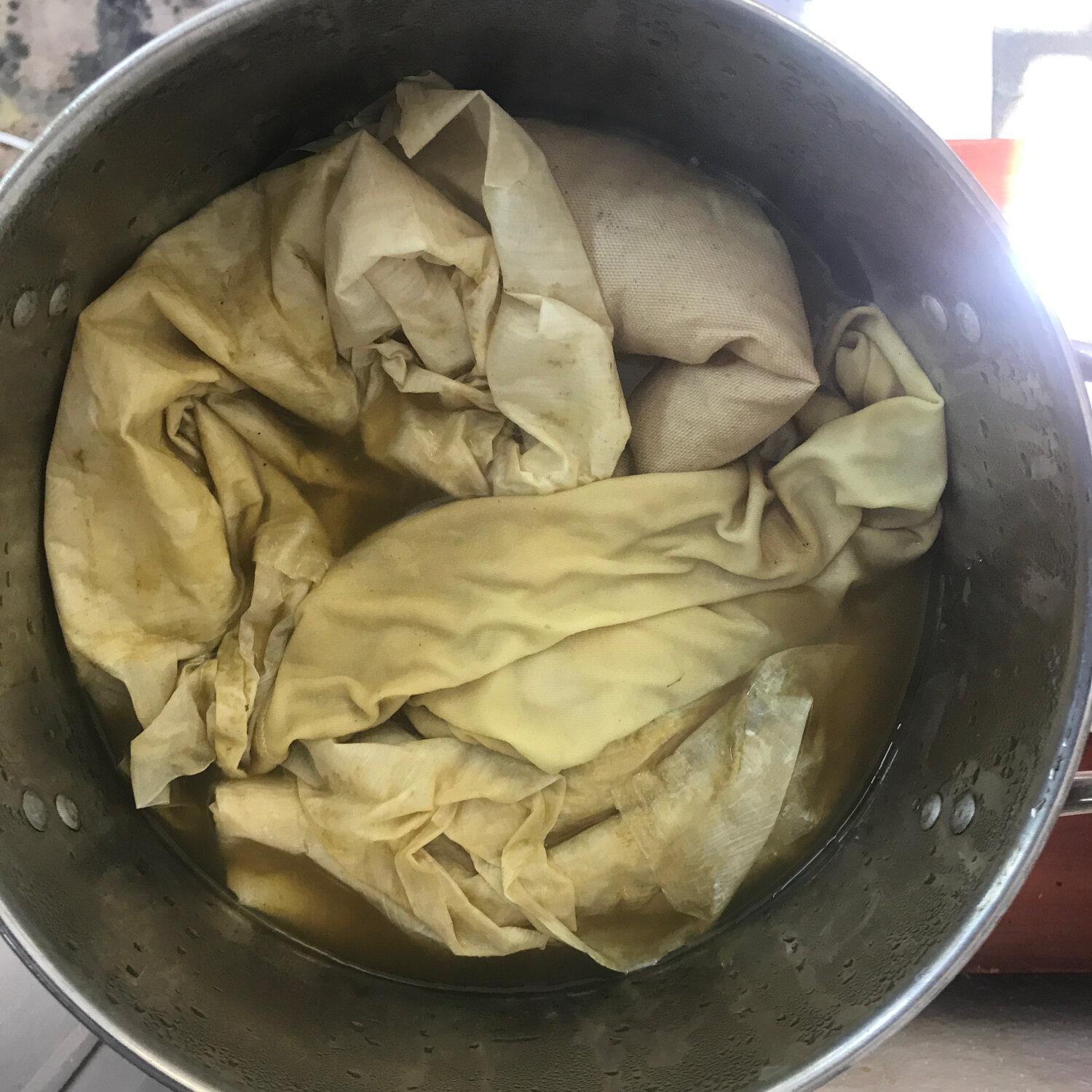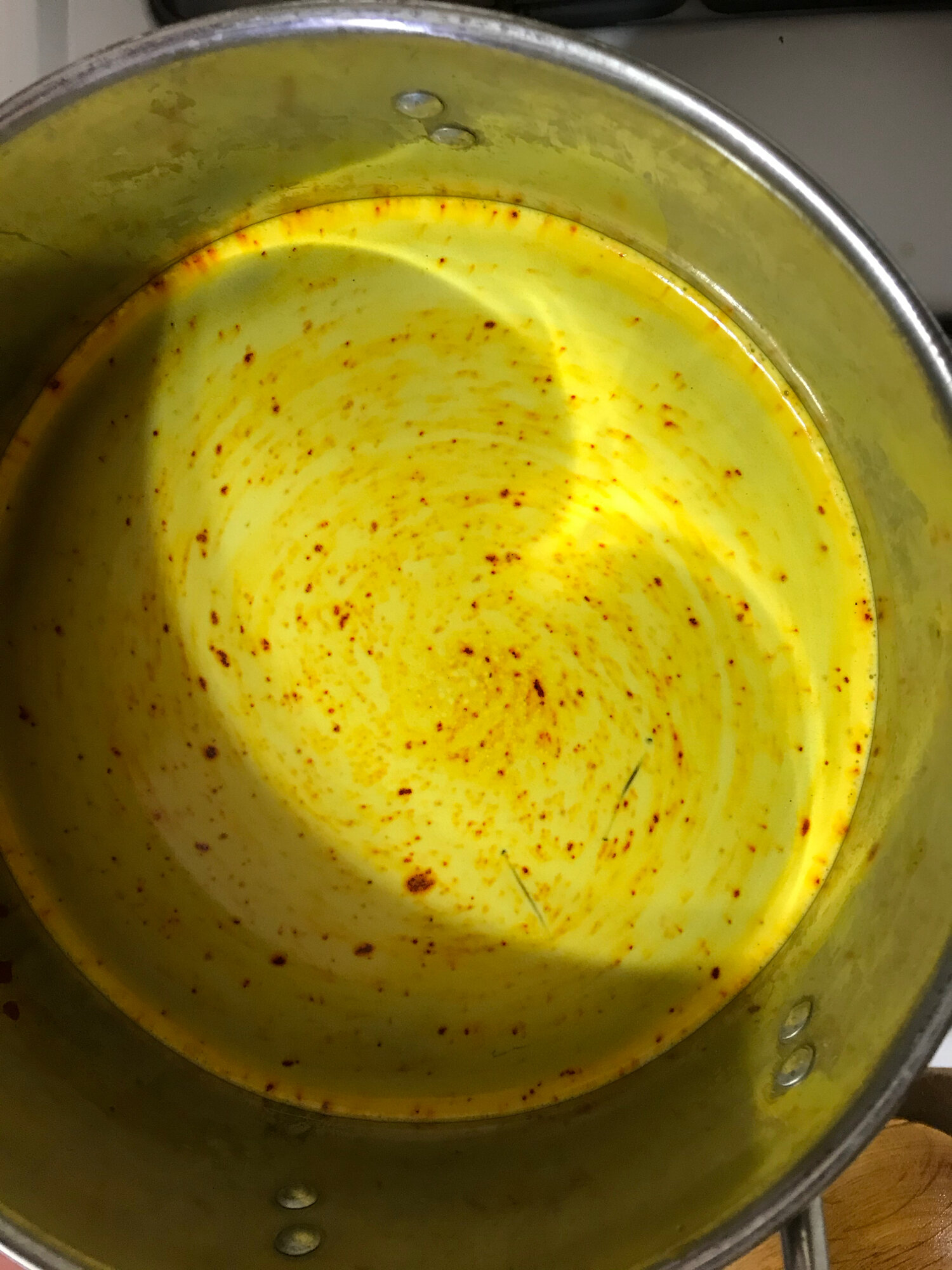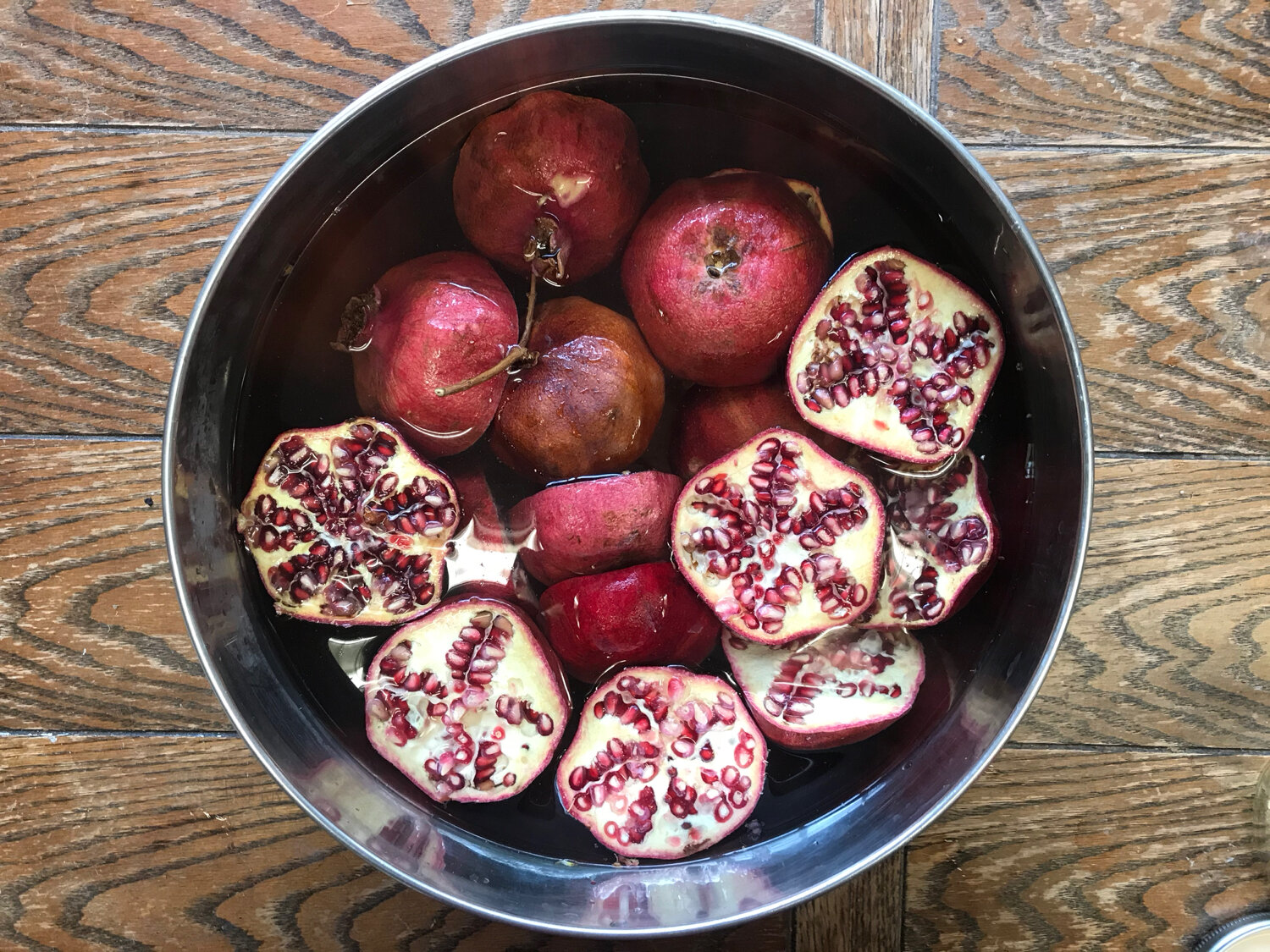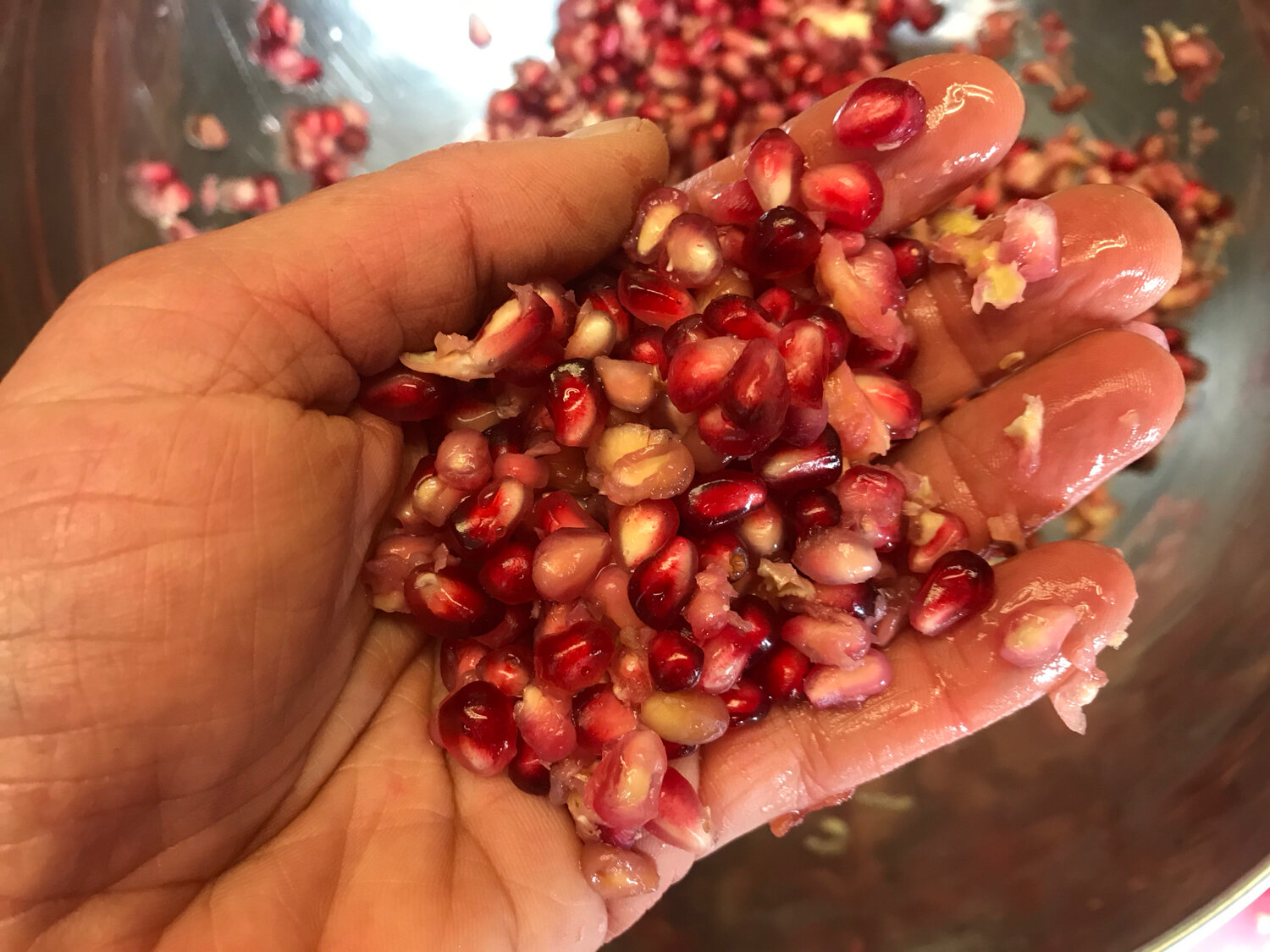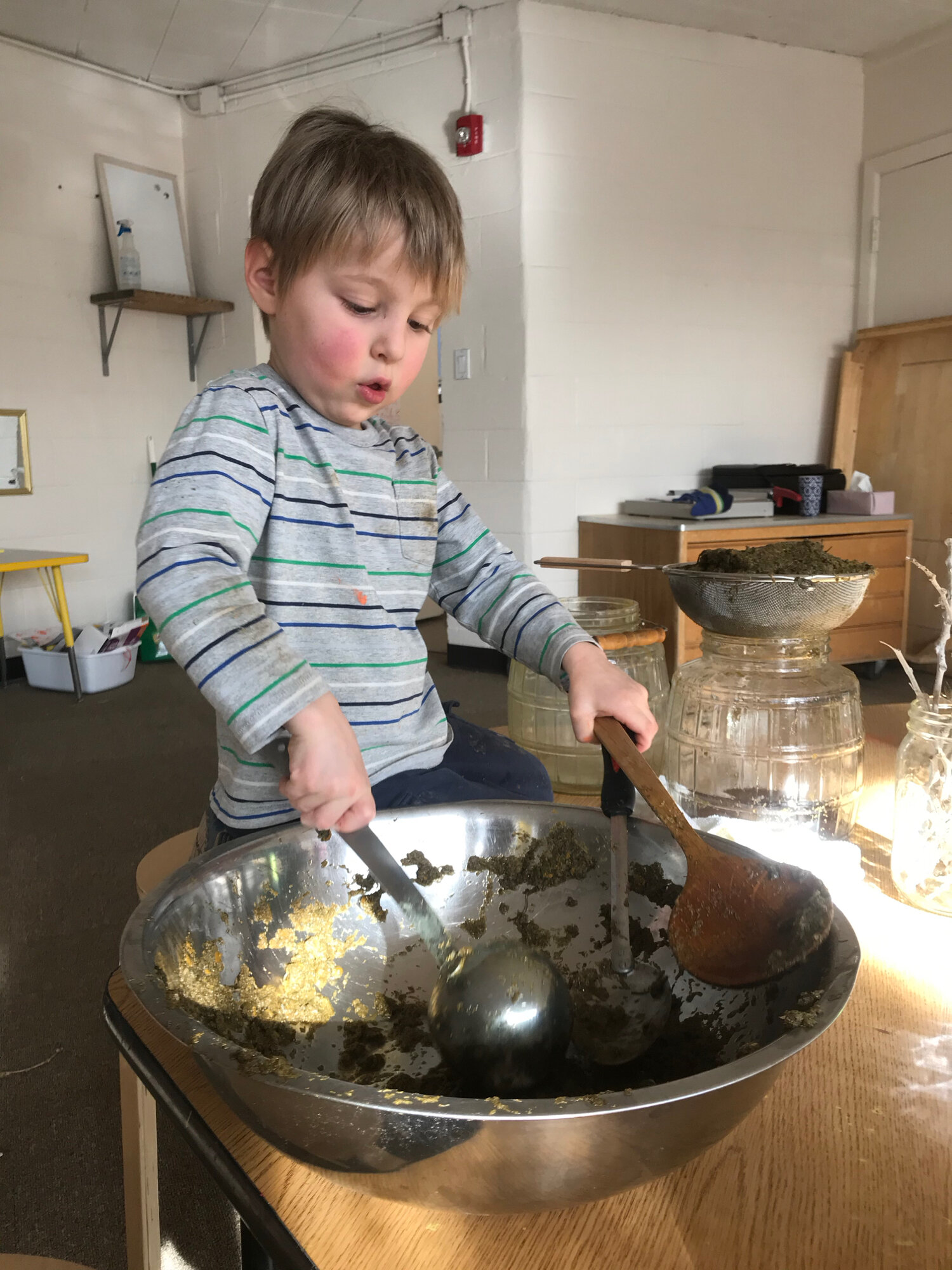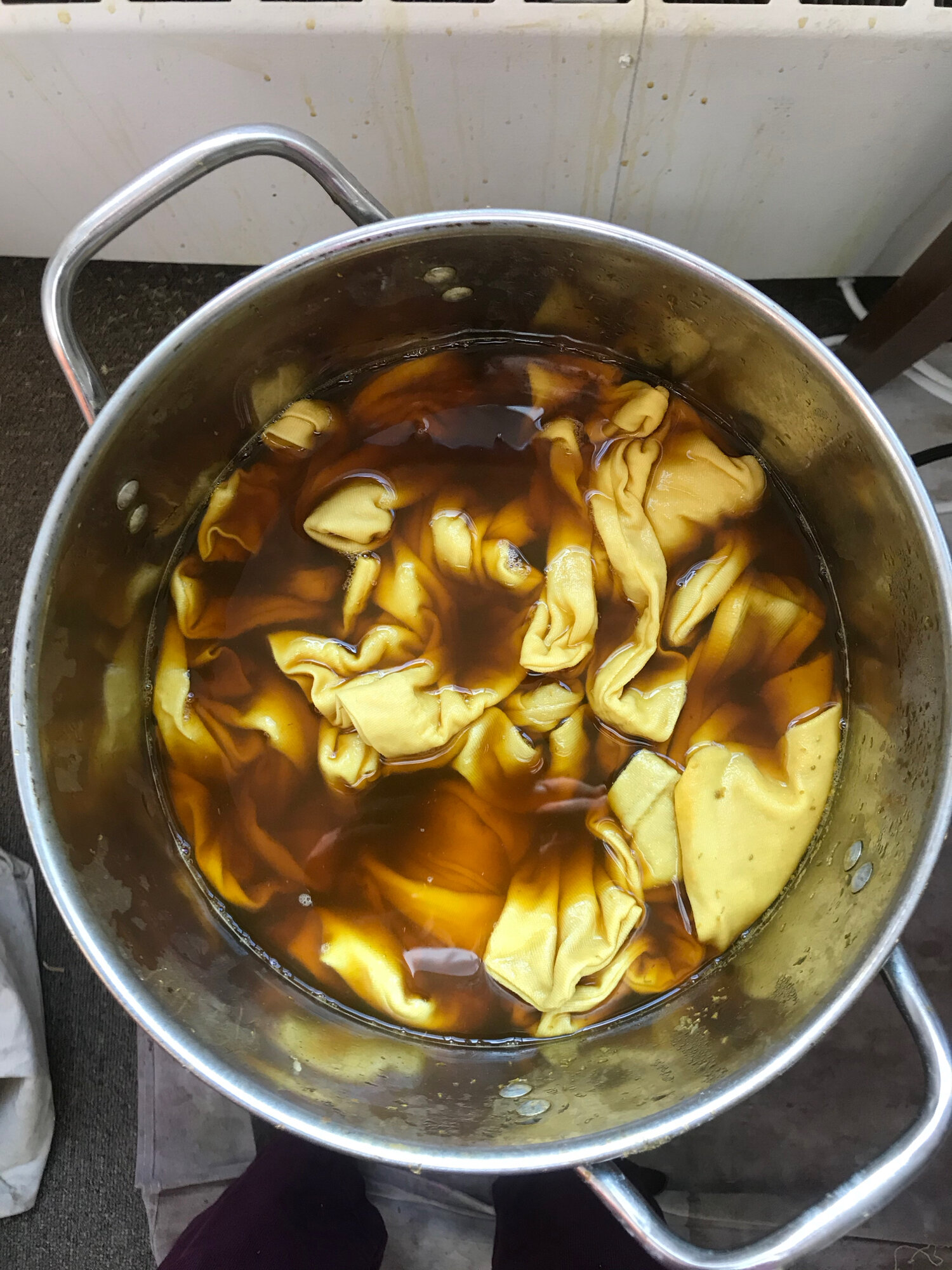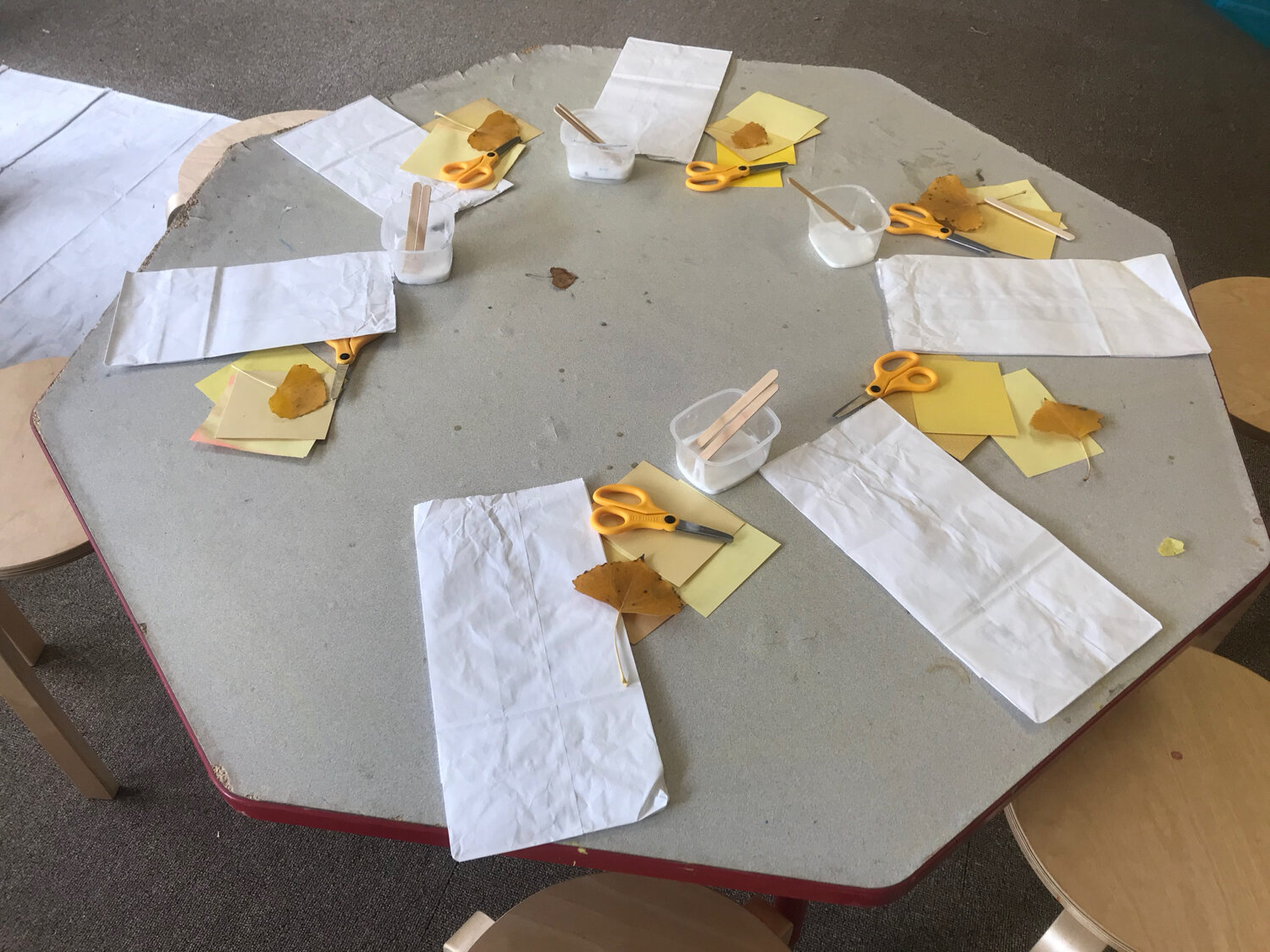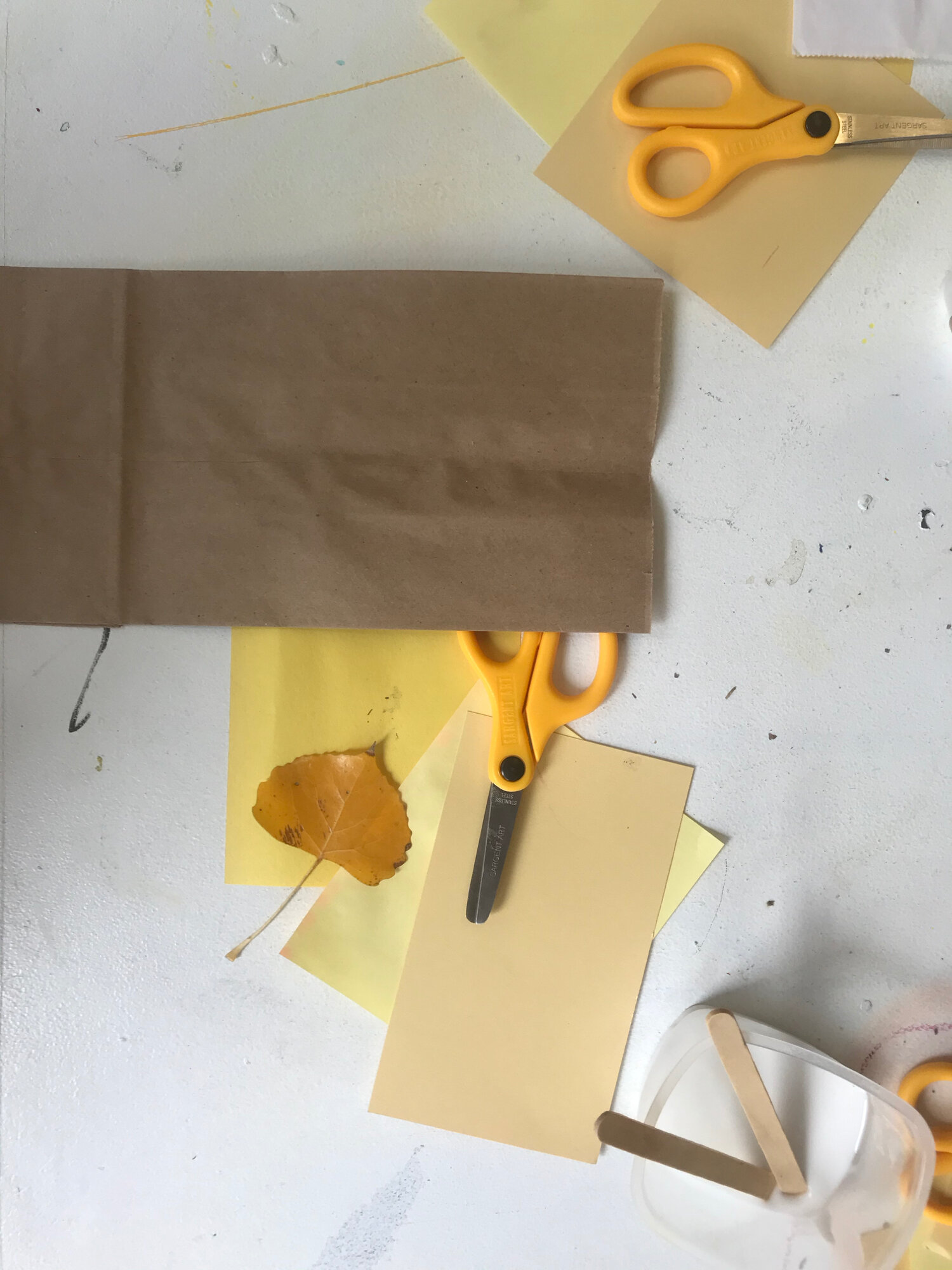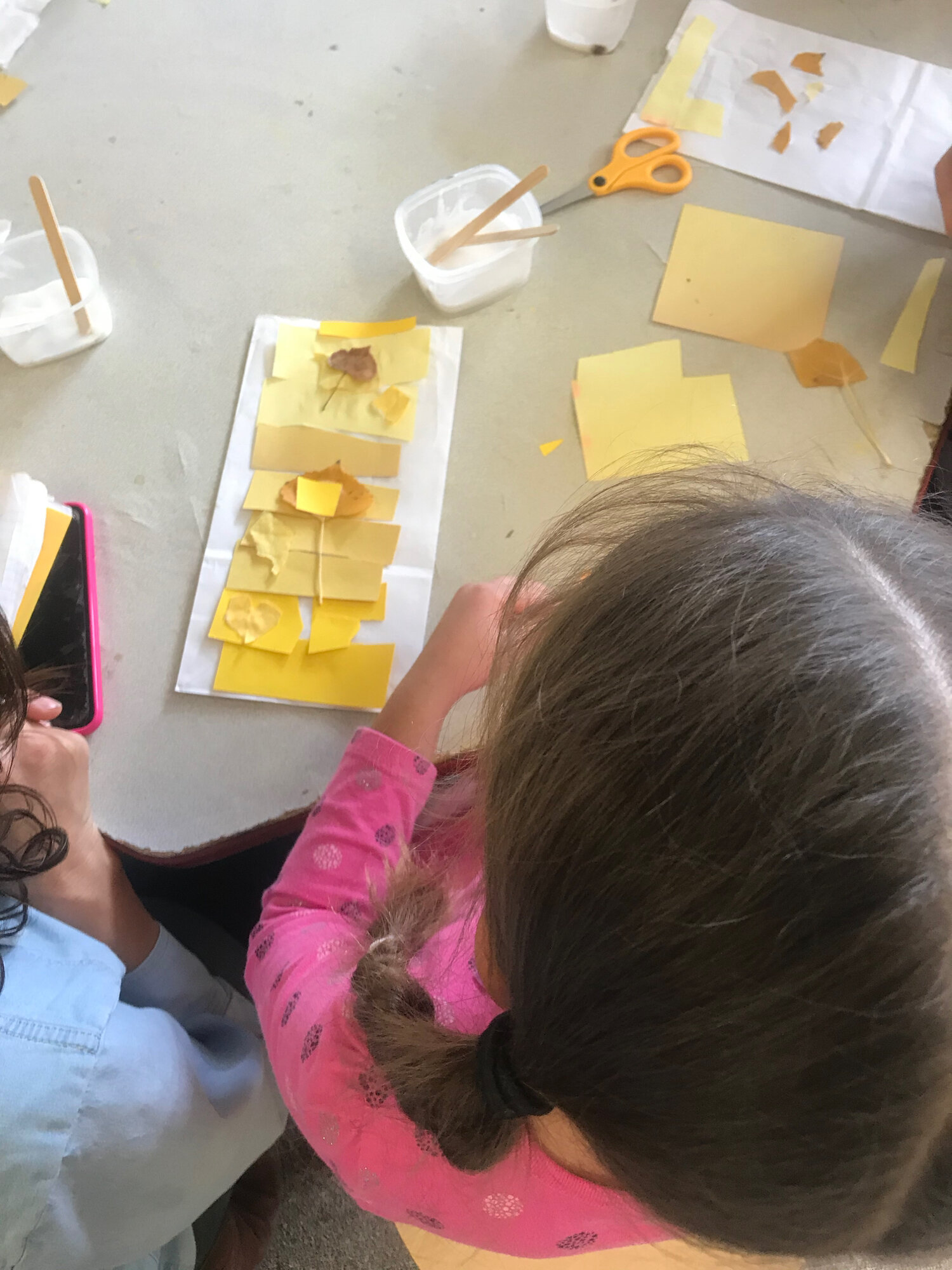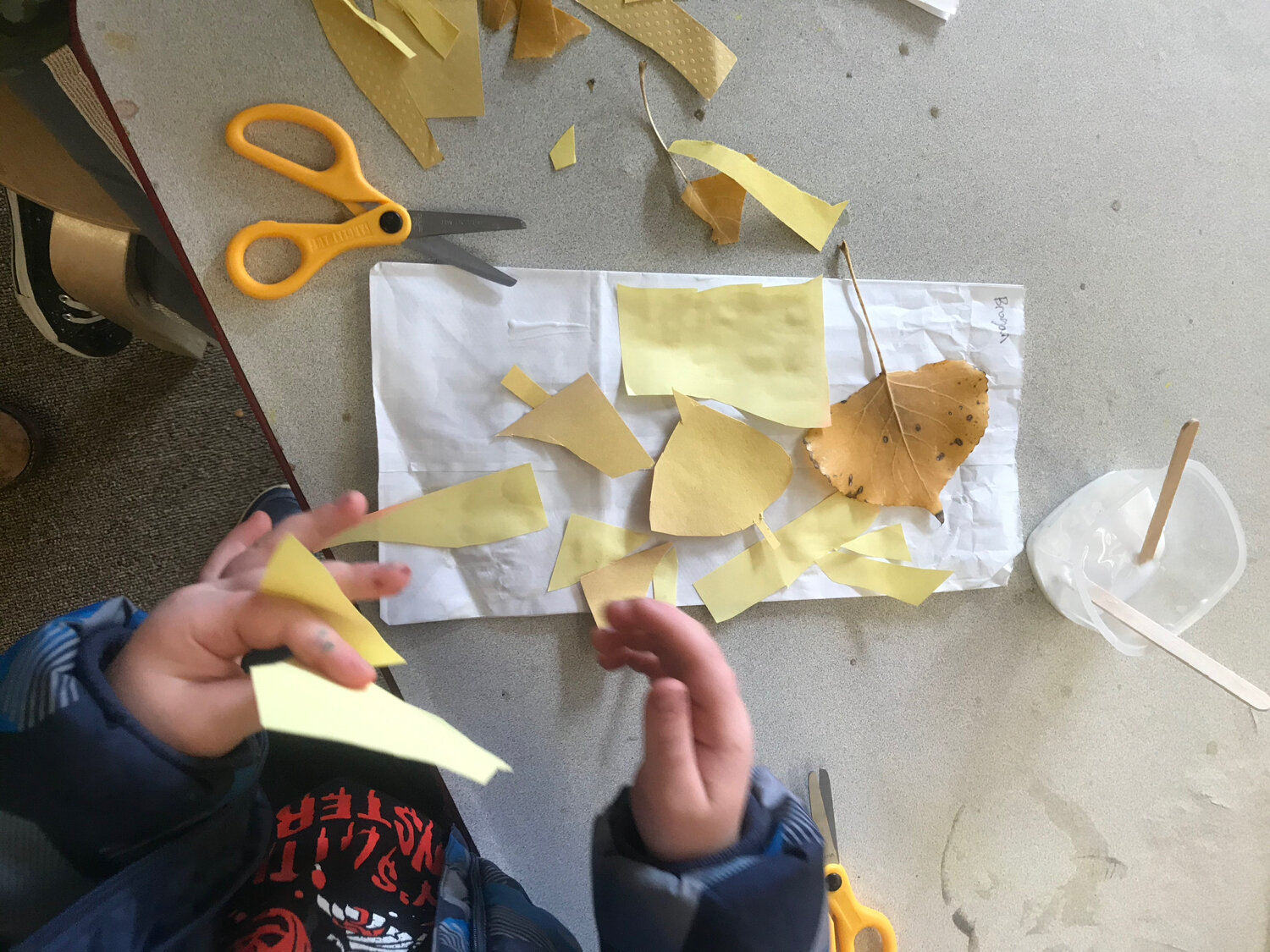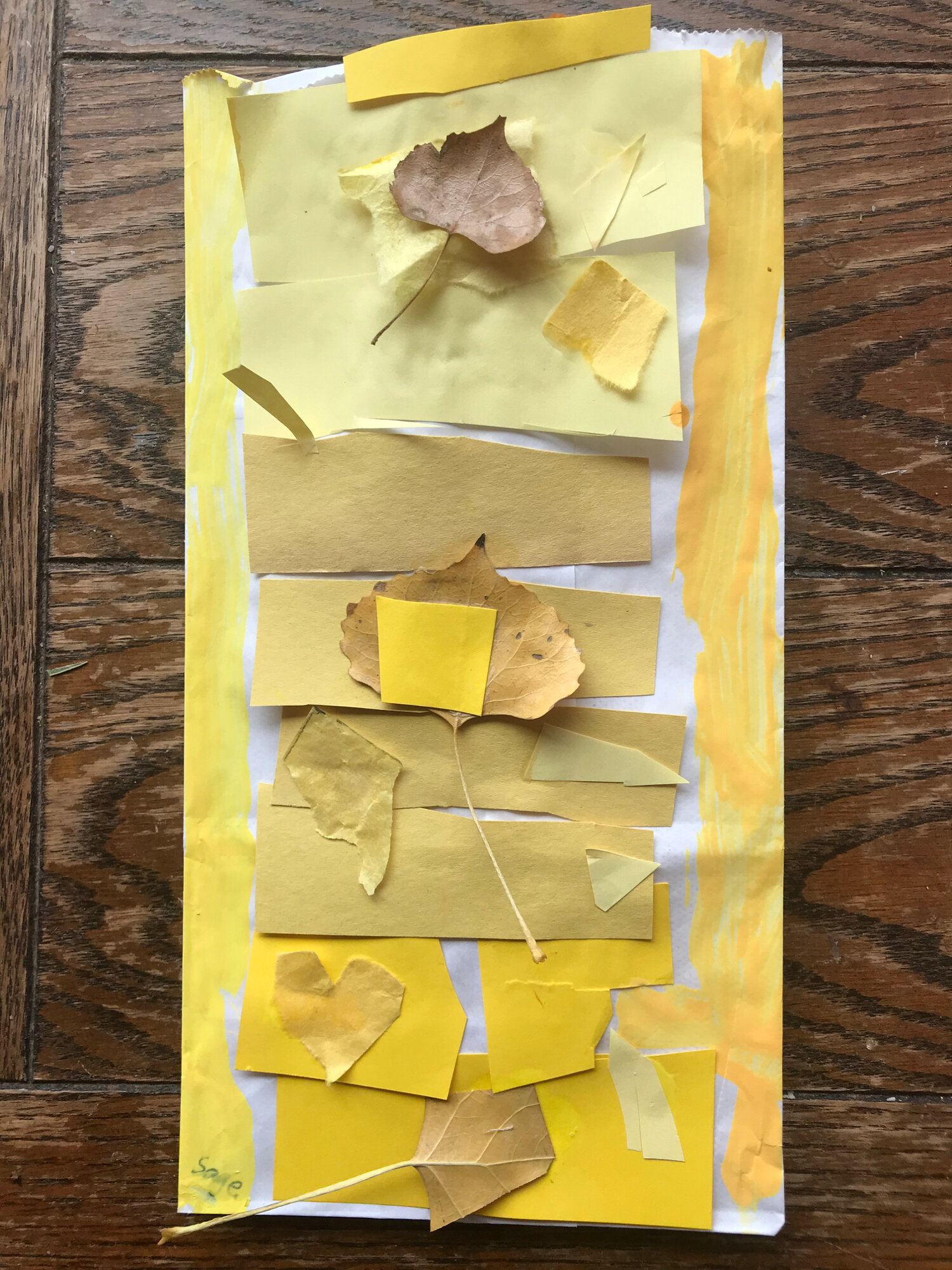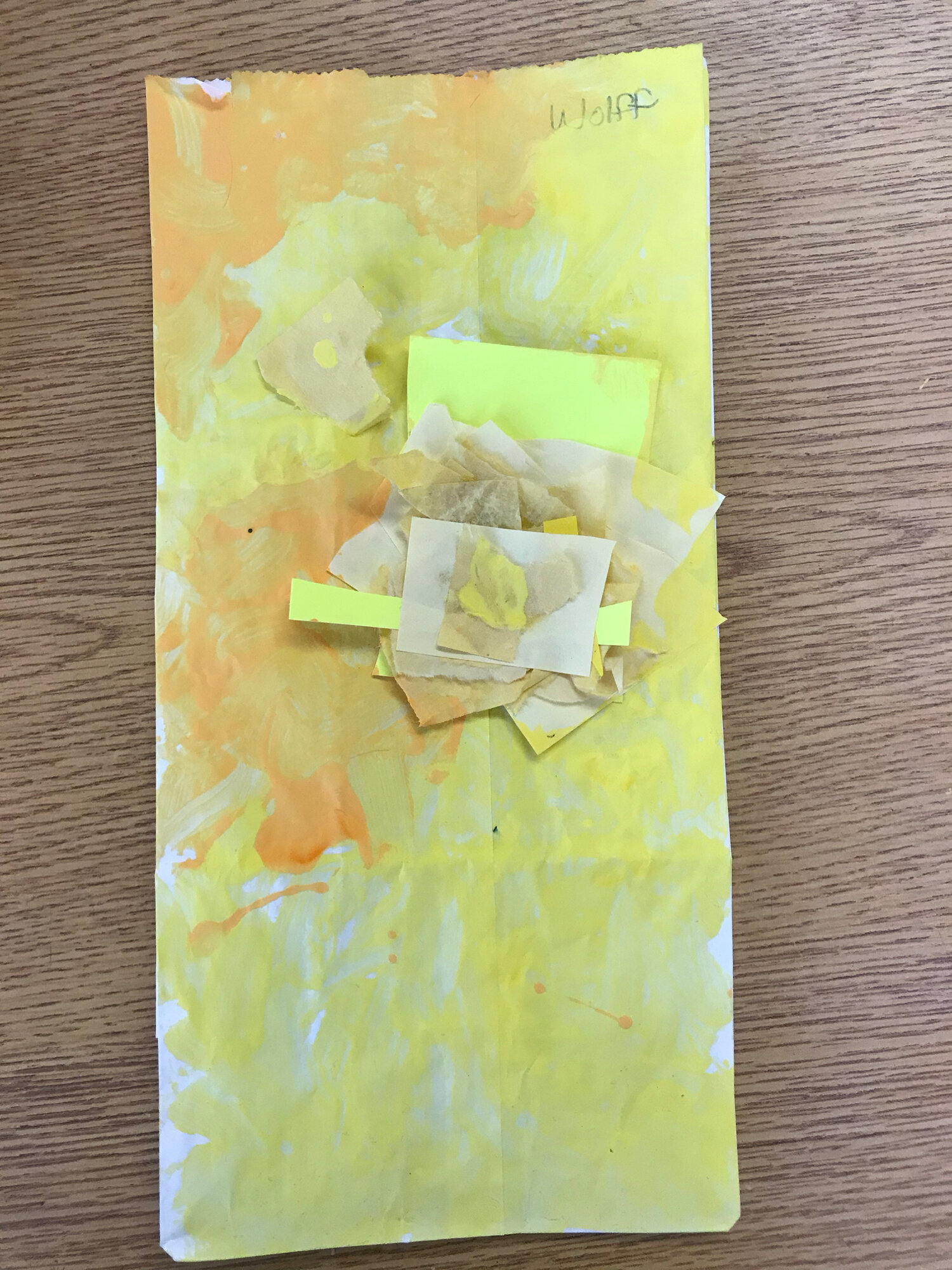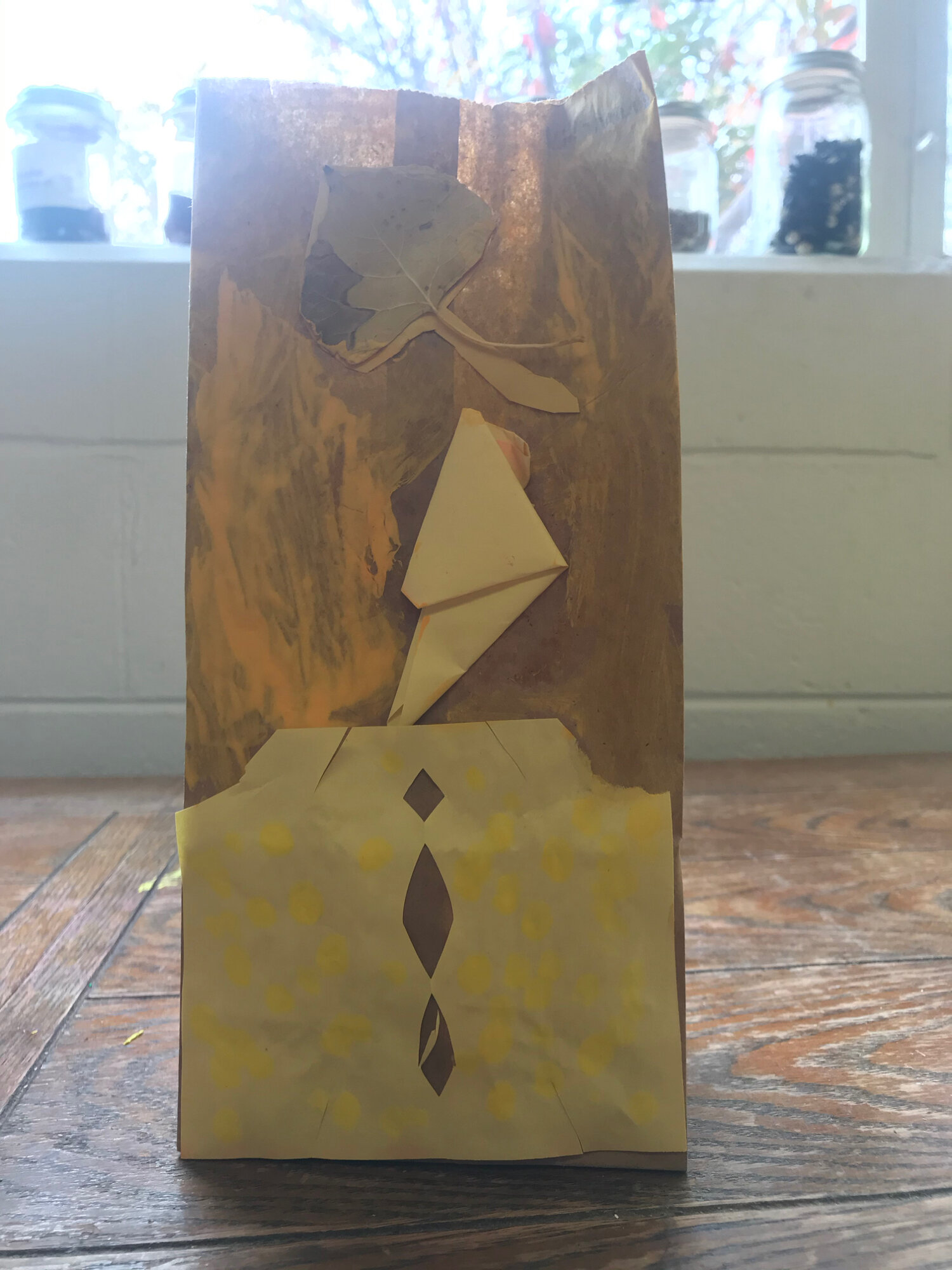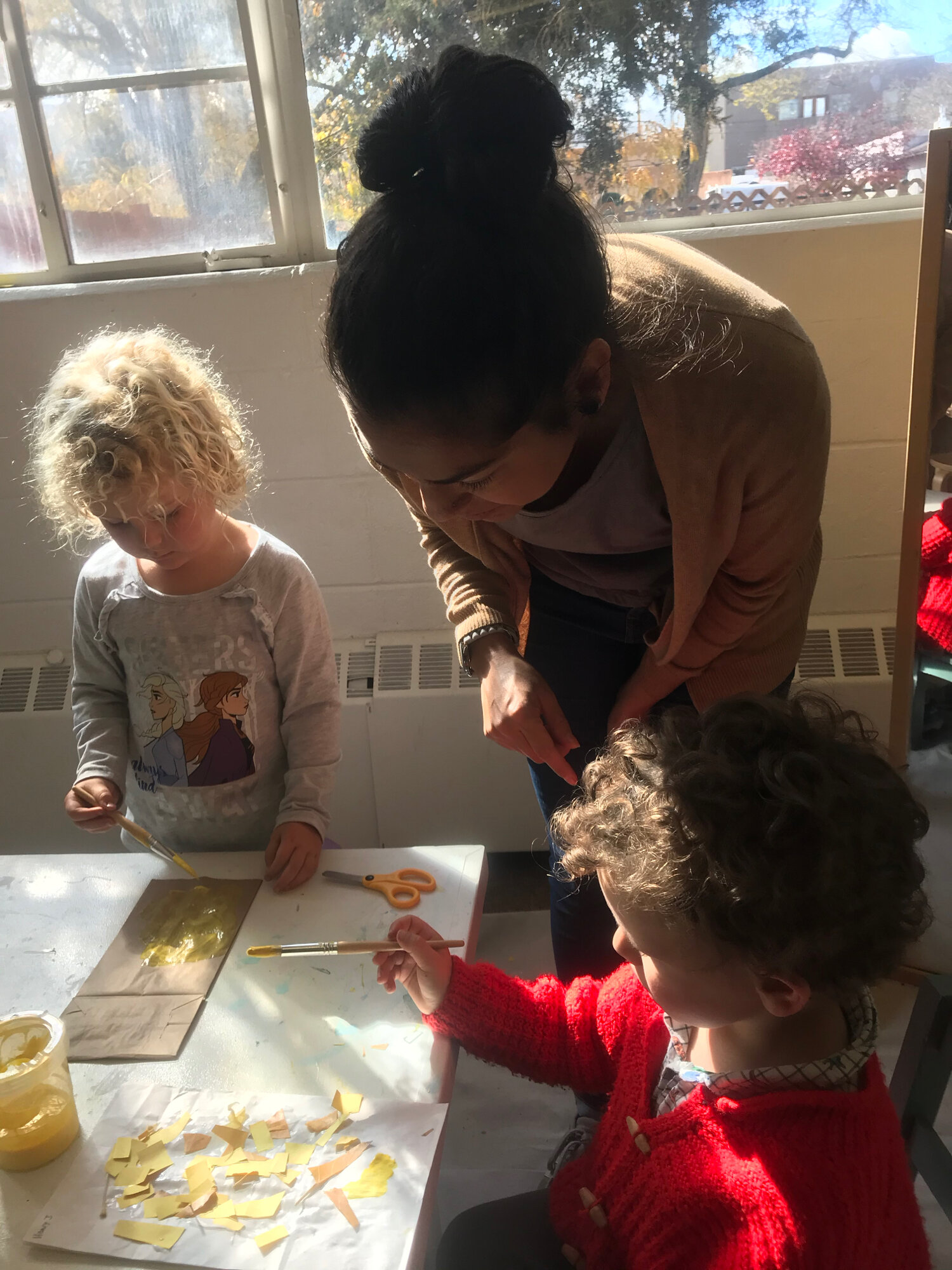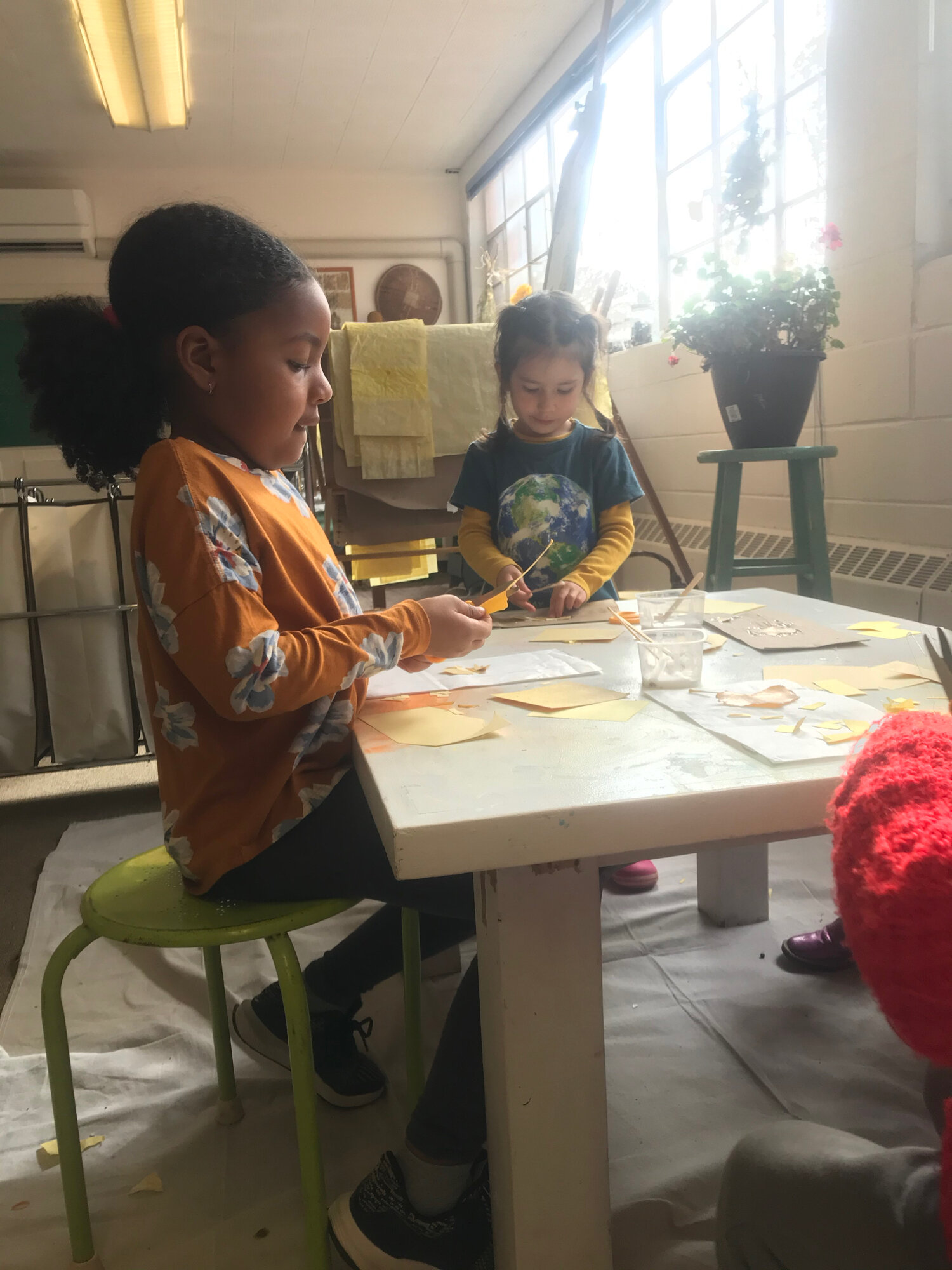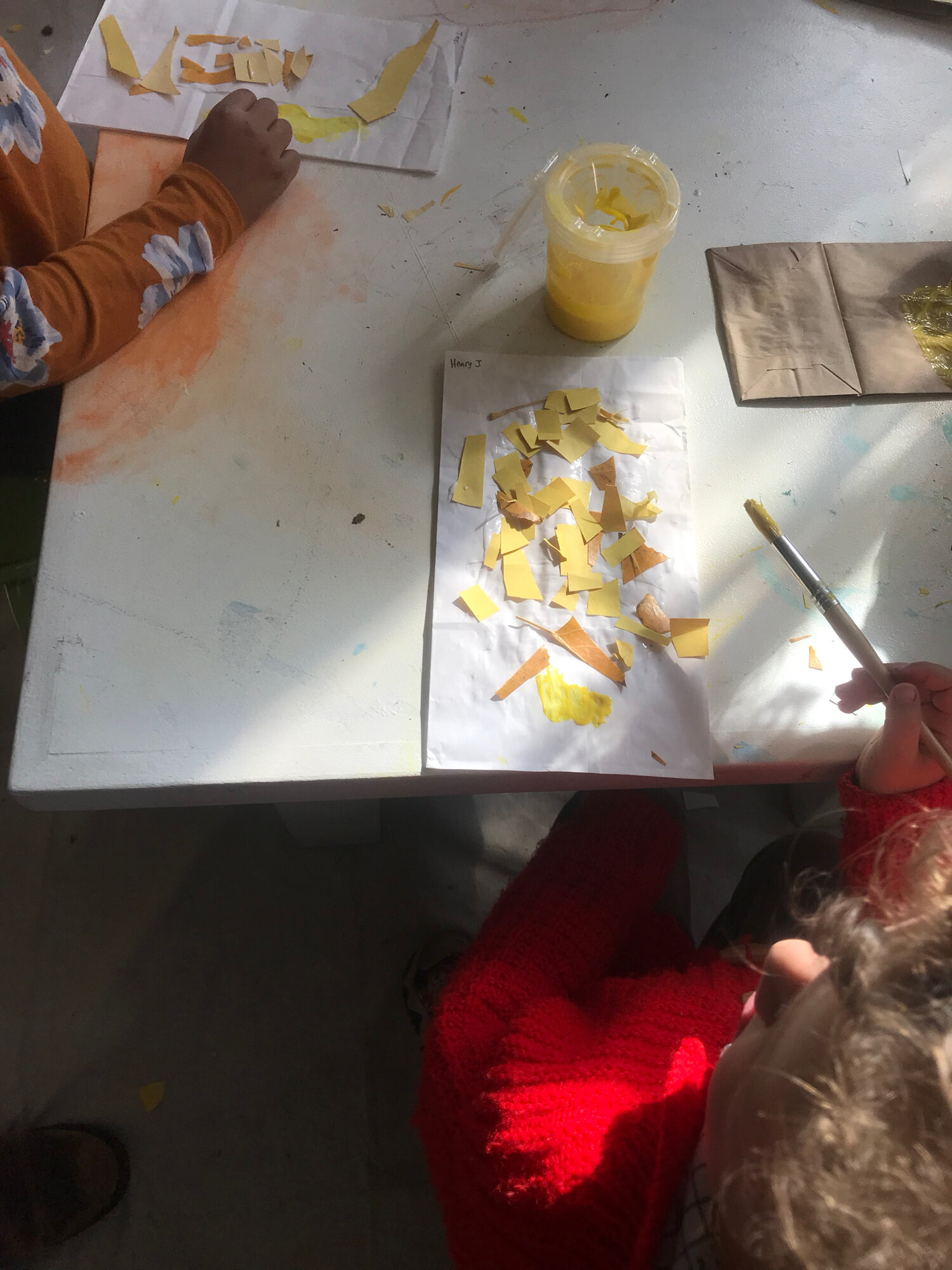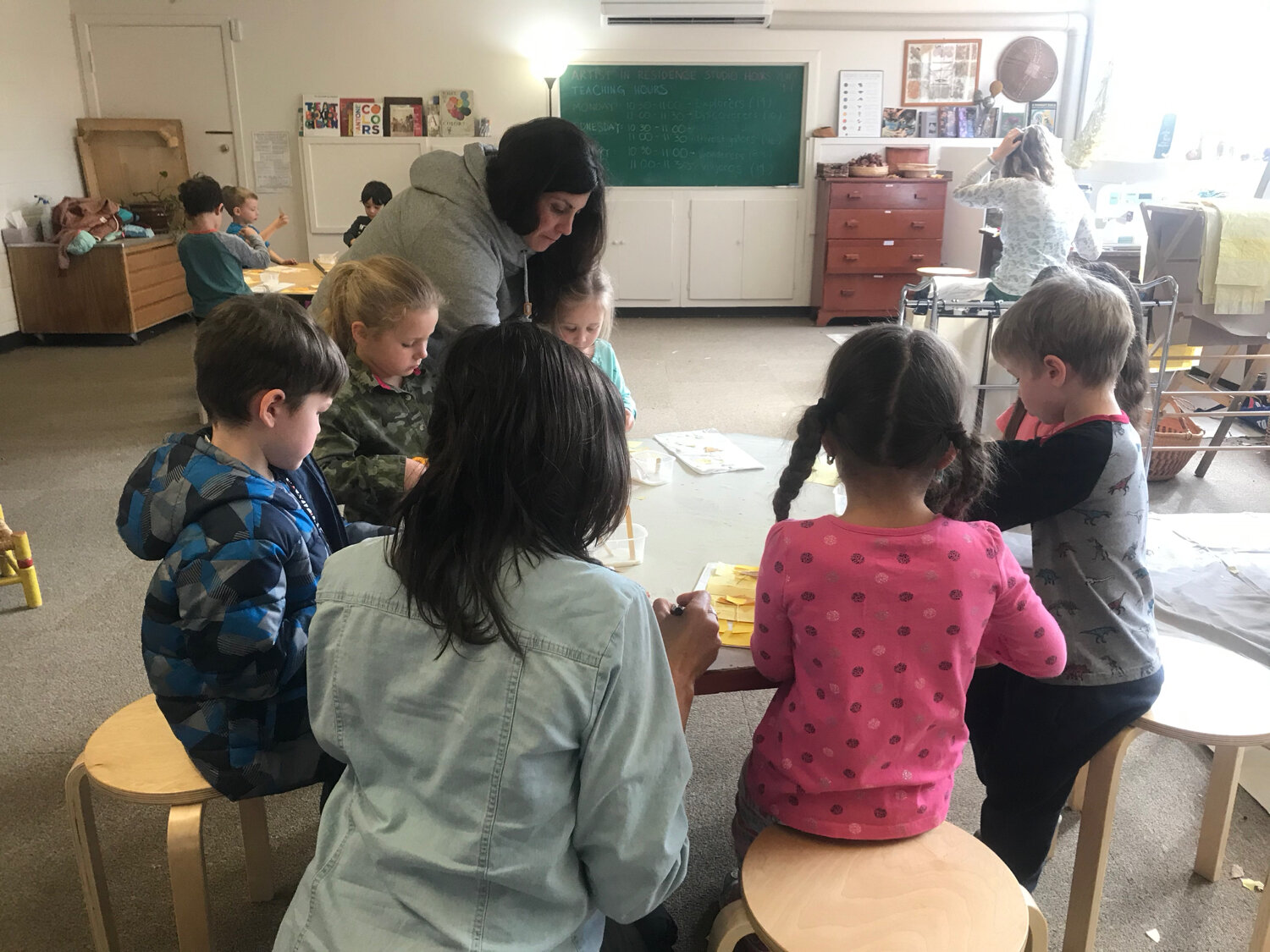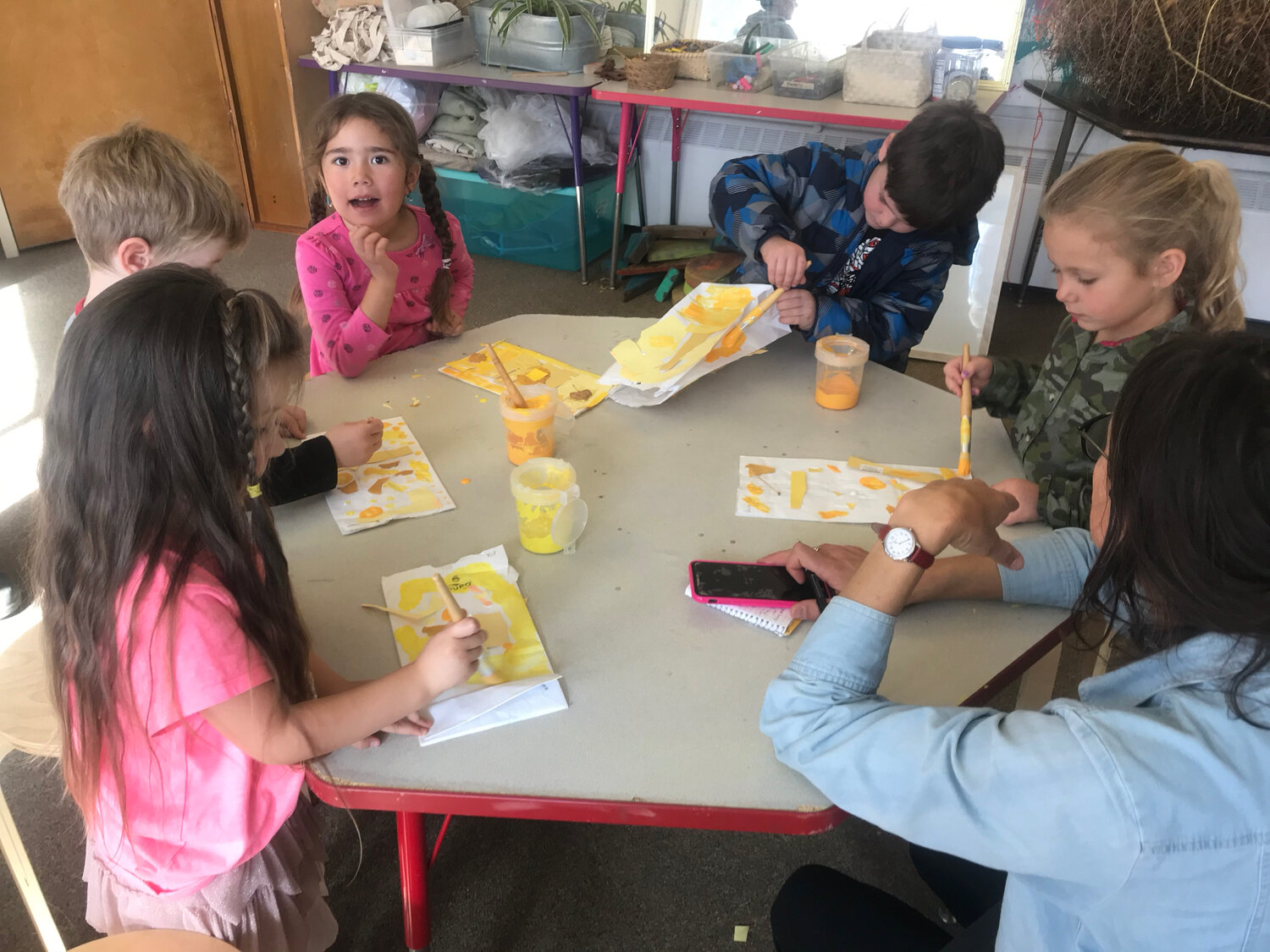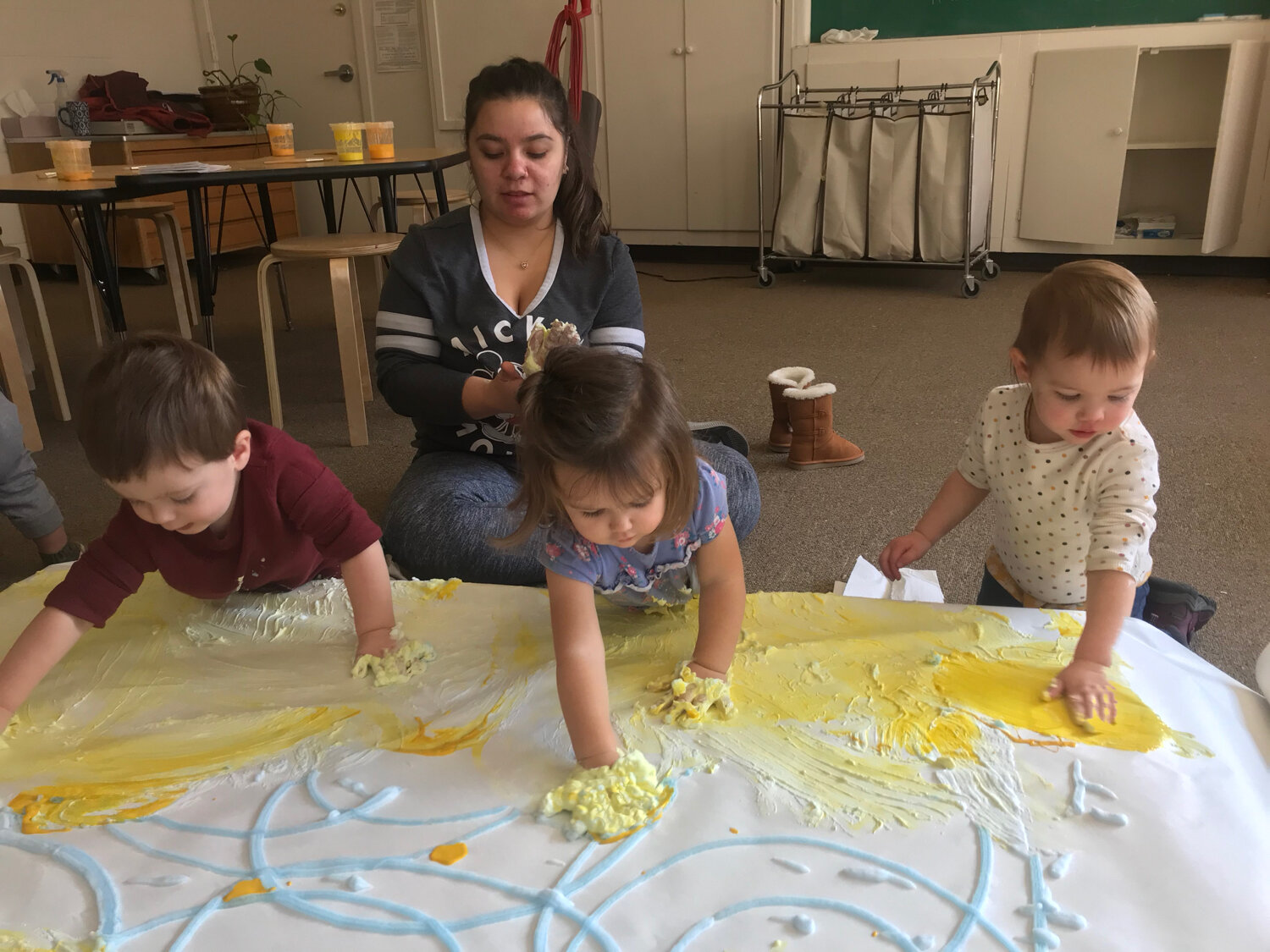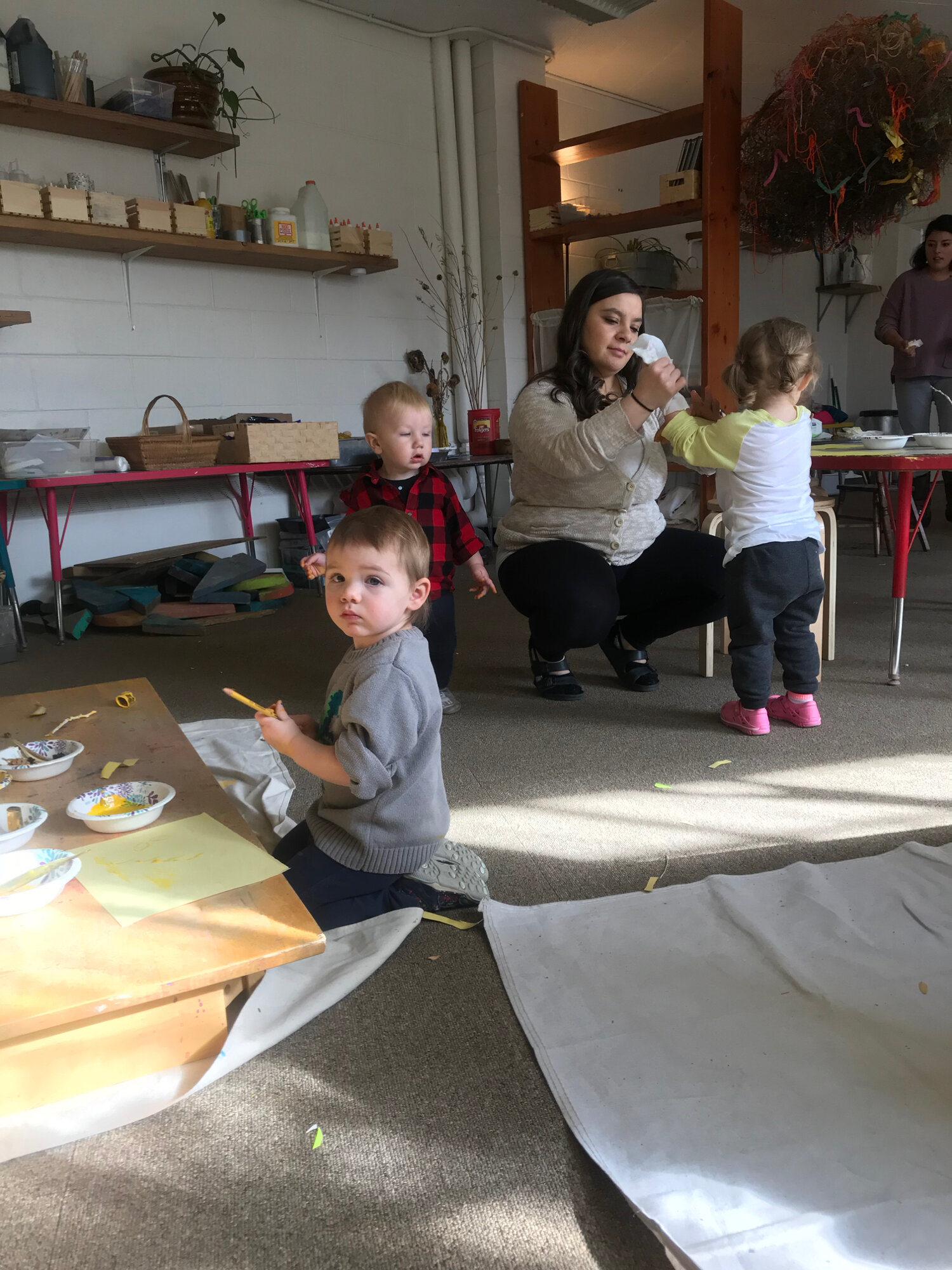As an artist giving this talk on Eva Hesse today, my intention is to not only give you an art historical perspective on her life and work, but to share the legacy of Eva Hesse’s contribution to the discussion of art and life as one—an idea crucial to my own art. Hesse was influenced by many artists, identifying with them, in an unself-conscious way, thus moving from a personal and private exploration of her world into something larger which belonged to the discourse of Modern art. It is through her example, that I take the same approach, and thus will demonstrate in my talk how I connect my work back to lineage of Eva Hesse and Post Minimalism. In response to her work, I also will be putting to question, how can women artists today make work from their experiences, while not resorting to autobiography and being pigeon-holed into making art made by women? In Eva Hesse’s days, that meant working in a male dominated art culture, and not being labeled as making feminine narrative work. In my time, it is the challenge of making authoritative work that relates to my experience of the maternal within the discourse of contemporary art, and not being dismissed as making mom art.
To begin a bit about Eva Hess’s life, she was born into a German Jewish family, where at the young age of three years old, Hesse was taken to America in 1939, shortly after Kristallnacht and the onset of WWII. Growing up with her parents in New York City, Hesse discovered her love for art. At the same time, her mother who had suffered from depression, tragically took her own life with the news of the death of her family who was left behind. Close to her father, Hesse was encouraged to pursue what she discovered she loved. She went on to study at Cooper Union and at Yale University School of Art, turning from painting to three dimensional sculpture, using materials such as string, latex, fiberglass, exploring contrasts of scale and texture, and increasingly articulating forms of her work in relation to walls, floors and the ceiling. She was a central figure in the artists’s circles, who were primarily male artists at the time, and whose concerns were the exploration of processes and materials and works were called ‘minimal art.’ Amongst the most notable exhibitions she was involved in was “Eccentric Abstractions,” at the Fishbach Gallery in 1966 and “Anti Form,” at the John Gibson Gallery and “9 at Castelli Warehouse” in 1968. A retrospective of her work was held at the Guggenheim Museum in 1972. Unfortunately, Hesse was not there for it, as she had developed a brain tumor and died at the young age of 34, on May 29, 1970.
I on the other hand am an American-Colombian-German artist, whose parents were both first generation immigrants. I was born in 1975, five years after the death of Eva Hesse. I grew up in the midwest in a middle class home, in a suburb just north of Chicago. Although my set of circumstances were entirely different from Hesse’s and filled with a considerable amount of privilege, there is something to be said about inherited collective trauma, which I carry in my “cultural genes,’ as both my parents grew up in Germany during WWII. Graduates of UNM and then Stanford, my parents both became professors. My father taught German Literature and Avant-garde studies at Northwestern University, and my mother taught Latin American Women Writers and Spanish, and later was asked to teach in the German department at DePaul University. Attending DePaul for undergraduate school, I was supported by my parents to pursue my BFA in Painting, where I was trained as a mural painter and later was hired and worked with the Chicago Public Arts Coalition.
During my time as a young student of painting, I frequently visited the Art Institute of Chicago. It was at this time, that I had my first encounter with Eva Hesse. I can remember it as if it were today, the feeling of excitement as I would approach the two lion statutes that framed the broad marble stairs that led to the entry of the museum. Upon entering, I would continue walking up the grand staircase to the third floor, that led through a double glass door into the Impressionist wing of the museum. Filled with paintings by Monet, Cezanne and Renoir, I would get as close as allowed to study the surfaces of the paintings, looking closely at the brush marks, observing the way one color would meet another. After close examination, I would step back, to take in how they all met to create a sense of fleeting forms and visceral sensations within me. After the Impressionists, I would loop around to the 19th Century European Art, and then through the stairwell that was home to one of my favorites, The Sky Above Clouds, by Georgia O’Keefe. Living in ABQ now, I see how she truly captured a sense of place. From there, I would go up one more flight to the fourth floor, entering through the Nicols Brideway into the modern art wing, where I would have my first encounter with Eva Hesse’s, Hang Up (1966). As a young student interested in the specificity of painting, I was not quite sure what to make of what it was I was looking at. Yet the ludicrousness of it is still being imprinted on me today. It can be described as a fairly large rectangle frame that is wrapped in fabric and painted in varying shades of grey, which is hung on the wall. From it protrudes an awkwardly long metal chord that loops out onto the floor and then curves back up onto the other side of its support. Although it’s physicality is memorable and fairly easy to describe, it’s meaning was unknown and highly questionable to me at first encounter. Was it a painting or, sculpture? What was its purpose, and meaning? The questions about Eva Hesse’s work continued to allude me for the next twenty years, which is what has brought me to the last six months of concentrated inquiry, and recent discovery of a kindred spirit.
The life and work of Eva Hesse has influenced me as an artist in the way that she has made work from her life experiences. As a refugee from Nazi Germany, it is her involvement with materials that she used as a way to process all that happened to her, which fascinates me. Hesse expresses her personal responses to external events through materials and process rather than narrative and symbolism. In doing so, Hesse copes with the content or, meaning underlying her work which essentially embodied what she identified as the ‘absurd.’ Through exploitation of paradoxes: expressionism/minimalism, absurd/rational, painting/sculpture, feminist/anti-feminist, she was able to process the difficulties of her trauma into something that was morphed into and manifested by its positive form of play, joy and even celebration of life. In doing so, it also helped her form non-dualistic views that allowed her to integrate art and life. I think the impetus for Eva Hesse to merge art and life, and her general tendency toward non-dualism, is rooted in a desire to take the fragmented parts of her life and maker herself whole. The inquiry of paradoxes in her work reveals the different ways she tried to do so. Amongst the first, which I will discuss, is the type and genre of work which she made in the context of art history and the ‘isms’ of her time which she did through the merging of the cool formal aspects of hard edge geometric minimalism with the tactile and personal aesthetics of what came to be known as post-minimalism.
Minimalism began in the 1960’s - 1970’s. Critic Barbara Rose wrote influential article named “ABC Art,” in Art in America where she referred to art as pared down to the “minimum.” It also aligned with the modernist goal of eliminating representational imagery and illusionary space in favor of reducing painting/sculpture to bare bones essentialism of geometric abstraction. It was a matter of a single unified image, often composed of smaller parts, often arranged in a grid, which also removed the touch of the artists hand. Examples of these postwar artists include: Barnet Newman, Ad Reinhardt, Agnes Martin, Robert Mangold and Brice Marden. The term Post minimalism/process art on the other hand was coined by Critic Robert Pincus-Witten and appeared first in “Eva Hesse: Post Minimalism into sublime,” In Artforum 1971. It favored Impersonal objects over closed geometric forms. The artist found inspiration in the human body, the random occurrence, the process of improvisation, and the liberating qualities of nontraditional materials such as industrial felt, molten lead, wax, and rubber. The impermanence of materials facilitated the creative process and interest for its own sake as seen in the works of Joseph Beuys. An example of Hesse’s true use of tactile materials in a minimal presentation is the installation piece Aught (1968) which uses latex and filler over canvas stuffed with polyethylene sheeting, rope, and unidentified materials. Here we see Hesse’s use of repetition of the rectilinear form, not so much as a way to explore formal questions, rather, she was using them to express something else. Her geometry, never strict, is always subject to warping, squeezing, stretching and twisting under the stress of the substance being formed. With its yellow, wrinkled and semi translucent appearance, it looks like skin aging over time. Without knowing directly what Eva Hesse was exploring outside of materials, the artist gives us substantial visceral cues to respond to through its material presence, yet the title Aught (which literally translates as nothing) reinforces the stand Hesse took on not resorting to autobiography and being pigeon-holed into issues of gender and art.
It was through this more recent understanding of this discourse in art history between the edge of cool minimalism to the tactile and more expressive mode of working such as in post-minimalism/process art, that I have come to identify myself as an artist more strongly along the later lines. Inspired by Eva Hesse’s minimalist language and reference the emotional body, I share my version of rectilinear skin beds in my piece Queen Sheet (2016), which was the first in a series of works, based on the one to one scale of my queen sized bed. Physically merging my artistic practice with my domestic life, I placed Kozo paper in our bed where I co-slept with my baby. Sleeping on top of the Kozo paper, the sheets become creased and torn, mapping the movement of our bodies, as we touched, tossed and turned throughout the night. After a week, when the bed sheets got changed, the paper was transformed into a paper collage, the size of my queen sized bed, evoking the skin it had been touching. Queen Sheet also resists an autobiographical reading and the temptation to be pigeon-holed into mother art.
One of the brilliant ways that Eva Hesse expressed art and life in her work was the way it manifested through matter. Art historian and critic, Rosalid Kraus identifies that her entry point into the discourse of modern art began with her piece, Contingent (1970) where she says, about the work “What the image of Contingent was delivering to the art world was a declaration about the expressive power of matter itself, of matter held down to a level of the sub articulate. In art-historical terms we could say that Contingent was countering the formalist dialogue of the 1960’s with the message of expressionism.” Let us take a moment to look at what Kraus meant by this? Contingent, is made of eight banner-like elements that hang from the ceiling. Each component is a large rectangular stretch of latex-covered cheesecloth embedded at each end in a translucent field of fiberglass. They appear as ‘skins lifted off the surface of a painting’, magically suspended in mid-air, a merging of light, color and gravity. Essentially what Kraus was suggesting was that Hesse was able to express in materials what was inexpressible through words.
Going back to how the importance of materials in Eva Hess’s work, has impacted my own, I would like share another piece in the same series of works of Queen Sheet, which follows the same call and response, as a way for materials to sublimate the inner experiences in the piece, River Bed, which is a double-entendre for the bed or channel in which a river flows as well as a metaphorical bed, which in this case is the marital bed. Using my standard queen sheet dimension, I brushed it with matte medium and sand I collected from the edge of the Rio Grande. By rubbing sand onto a queen sheet, the earth becomes a site for bringing together the maternal body and the sensual body. Rolling my body in water and then sand, I pressed my body on the sheet, which was prepared with matte medium (adhesive). Evidence of this act was captured through the marks that were left behind. The Performative act of River-Bed seeks to obliterate the identity dichotomy of mother-whore, and reclaims the body as a holistic entity unified in body and mind. By engaging body and earth, as material and form, the work further attempts to bring into dialogue that which go beyond theories of gender and art.
Regarding art and life, the absurd and rational, Eva Hesse was recorded addressing these topics in an interview with Cindy Nemser, published in Art Forum (1970). About art and life she says, “Art and work and art and life are very connected and my whole life has been absurd. There isn’t a thing in my life that has happened that hasn’t been extreme - personal health, family, economic situations. My art, my school, my personal friends were the best things I ever had. And now back to extreme sickness all extreme - all absurd. Now art being the most important thing for me, other than existing and staying alive, became connected to this, now closer than ever, and absurdity is a key word. It has to do with contradictions and oppositions. In the forms I use in my work the contradictions are certainly there. I was always aware that I should take order versus chaos, stringy versus mass, huge versus smaller and I would try and find the most absurd opposites or extreme opposites…I was always aware of their absurdity and also their formal contradictions and it was always more interesting than making something average, normal, right size, right proportion.” For example, let us look at Expanded Expansion, which is a sculptural embodiment of opposites united. Both permanence and deterioration operate in the piece: fiberglass poles—rigid, durable entities—are juxtaposed with fragile, rubber-covered cheesecloth. While its height is determined by the poles, the width of the piece varies with each installation; like an accordion or curtain, it can be compressed or extended. Its repetitive units echo the programmatic seriality of Minimalism.
As for the relation of art and life, recently my cousin in Uruguay reminded me that in Spanish there is a saying that Motherhood “Es el trabajo del loco” The work of the crazy! For those of you who have parented, you know what I mean, and for those of you who perhaps decided not to, you probably also know what it means, as it was this very reason you may have decided to opt out. But it is this very point that the content for my work in many ways has expanded into the realm of art and life as one, by doing so and trying some of the most absurd things I have ever done, like sleeping on paper, washing paper in the machine while doing laundry, and cooking in top of paper, allowing foods to stain the paper. These have been just a few of my strategies of merging art and life. Perhaps the best example of how I did so was is in my short film M A T E R N I A (2019) which examines the cultural thesis and claim which reinforces that motherhood and an art practice are exclusive from one another. The film began with the intention of being a documentary about process, but after a while it became clear that it was it’s own piece. After three years in it’s making, I discovered that for me motherhood and art making were in fact not exclusive from one another and that motherhood, and making this film, had in fact expanded my practice into an interdisciplinary one that thrives on the integration of art and life. My vision since having made this film was that in fact I also did not need to justify my existence as artist or mother, but that the two could coexist together in an integrated and authentic way, that pushes back against the history of art as mere formal history and asserts my experience as a position of authority.
Other formal ways in which Eva Hesse explored non-dualism, was in her advancement of the merging of the paradigm of painting and sculpture as distinct practices. She did so, often times, by taking the painting language and translating it into three dimensions such as in the case of the work of her colleague Jackson pollack. An example of this is Hesse’s work Right After (1969) where she openly acknowledges the importance of Pollack to her own. About it she says, “This piece is very ordered. Maybe I’ll make it more structured, maybe I’ll leave it changeable. When it’s completed, its order could be chaos. Chaos can be structured as non-chaos. That we know from Jackson Pollack.” In examination of this piece, Hesse casts resin over fiberglass chord and uses wire hooks to hang, drape, overlap the chords into suspended lines, as if she lifted them off the two dimensional plane and suspended Jackson’s pollack’s drips in the air. Through the direct translation of line from painting and transforming it into three dimensions, the two remain so closely tied together that she blurs the boundary from what belongs to painting to the question of what is sculpture. Another way that Hesse plays with the blurring of boundaries between sculpture and painting, is the attention she gives to edges. Things begin in the wall and end on the floor, or the wall adjacent to the one where she started. Such an example would be us Sans 1 (1968) that is made up of fiberglass and mettle. It t is shaped into repetitive, rectilinear, compartments that appear much like a vertebra which stretches down from the wall and wraps around the threshold onto the ground.
Sharing a similar inclination to blur the boundary between painting and sculpture, let is look at my installation, Dissolving Dichotomies, which deconstructs conventional notions of painting, and crosses over into large-scale collage and installation. Rooted in materials and processes, the works Washing Machine Drawing, Habit Loop and Joy of Cooking, simultaneously assert the knowledge that the frequently separated roles of motherhood and artistic practice are co-creative forces. Made up of kozo paper, running the scale of 20” x 15,” the paper was exposed to the various domestic tools and activities, such as the washing machine while doing laundry, stains made up of coffee, chocolate and wine (the substances of desire in motherhood that often arise as a counterbalance to the craziness of parenting) to spices that were spilled on countertops while preparing for evening family meals.
The use of repetition in the work of Eva Hesse not only comes from a formal response to minimalism. Consider what she says when asked by Nemser, why she repeats a form over and over again, she says, “Because it exaggerates. If something is meaningful, maybe it’s more meaningful said ten times. It’s not just an aesthetic choice. If something is absurd, it’s much more exaggerated, more absurd if it’s repeated…” Hesse’s serialist presentations were often string-wrapped hemispheric reliefs, first realized in the important, Ishatr of 1965, from which dangled at each mound’s center, a length of line: the erotic abstractions, of the earlier breast like configurations, treated in modular sequences. Such reliefs were worked out in numerous geometrical drawings which emphasized circles, placed one beside the other in a grid formation. This kind of drawings by which Hesse was attracted during 1966-68 emphasized modular grid arrangements. In this way she alluded to the highly regarded work of Agnes Martin - She was also attracted to the single motif of isolation as she refers to the targets of Jasper Johns encaustic (hot wax) paintings of the late 1950’s.
The use of repetition that is also a reoccurring primary element in my work, can be seen in Stove Top Burner. Made up of 5” squares it uses the domestic tool of the stove top burner to imprinted marks on them and then stained with a healing “Goldenrod,” liquid in the center, running 24” x 15.’ Eliciting the feeling of wallpaper, through repetition, the look of breasts or, fried eggs (or as my kids would call them ‘belly eggs’) make visible the hidden absurdity of the repetitious labor of breastfeeding, cooking and caretaking. Let me state it in a paradox the final opposite I would like to explore, which is that Eva Hesse, was both a feminist and anti-feminist. Her work explored her personal experience, which was often time a characteristic reserved for work made by women, yet she cleverly refuted such categorizations by insisting on the materials and the “absurdity “ of paradoxes as the productive content of her work. Her experience of the absurd in life makes her productive in her art as it challenges her to go beyond any mere narrative or symbolic dealing with it! The forms in her work also may have often times evoked sexual or, feminine bodily forms such as breasts, yet Hesse remained firm to her association to her work as exercises in materiality such as in the classic example of her work in Ringaround ARosie (1965). She Constructed these protruding forms with cloth-covered electrical wire atop a papier-mâché-treated masonite board. Though Hesse initially likened the forms to both male and female body parts, they ultimately remain firm in their material presence.
Inspired by Hesse’s insistence on materiality and simultaneous suggestion of the abstracted body, I here share my most recent work that is directly influenced by Hesse as well as minimalist artist Brice Marden. In the piece, Madder Root Ma (2021), I evoke maternal labor through the patchwork of naturally dyed fabrics that have been washed, scoured, ironed, sewn and stretched over stretcher bars. Integrating abstracted figurative elements, I introduce the “lumpy, bumpy, luscious body,” (to quote artist-critic Max King-Cap) in an attempt to break down the age long dichotomy of Sacred and Profane love.
I hope this talk about Eva Hesse and my work has given you some insight into the concerns of women in the arts, and how their personal stories may guide the process but in short, it is through the assertion of materials and engagement with the discourse of contemporary art, that women artists can assert their authority and make meaningful art without resorting to autobiography and being pigeon-holed into issues of gender politics. In the spirit of envisioning a dissolving of a gender identity based art, let me conclude this point with a quote by Eva Hesse from the famous interview with Nemser. Here Hesse responds to a question about gender and art saying, that “the way to beat discrimination in art is by art, excellence has no sex.” Through her demonstration of how art can lead to excellence and a life well lived, she obviously states that art is a medium of overcoming the “absurdity’ she experienced in her life.
